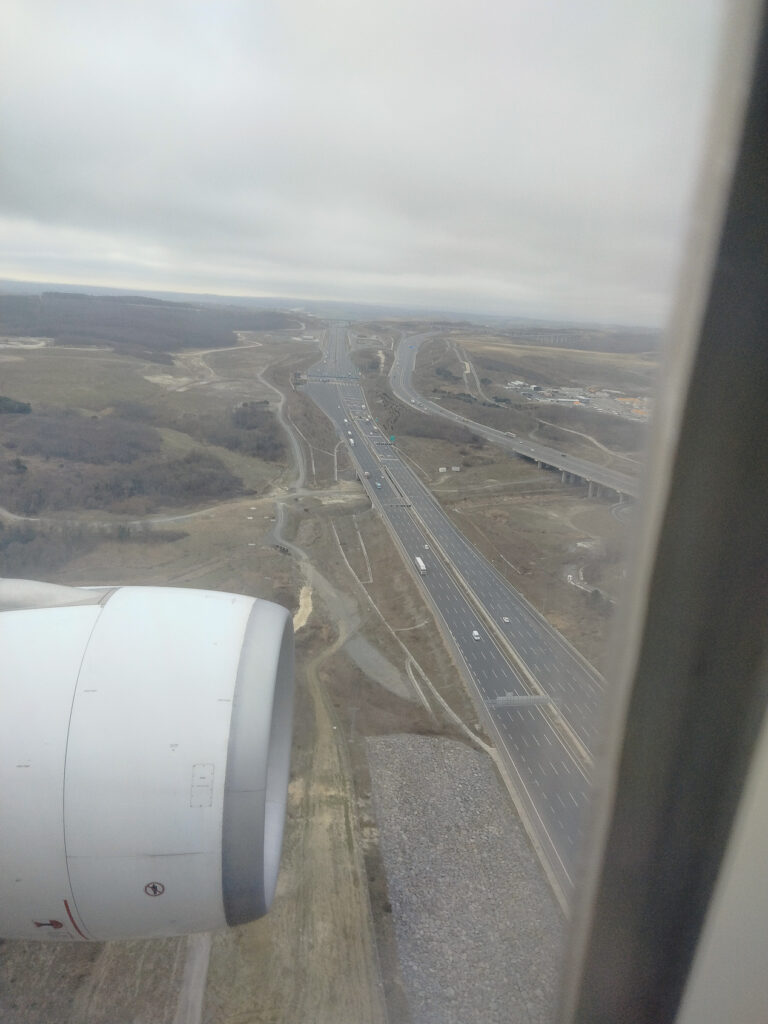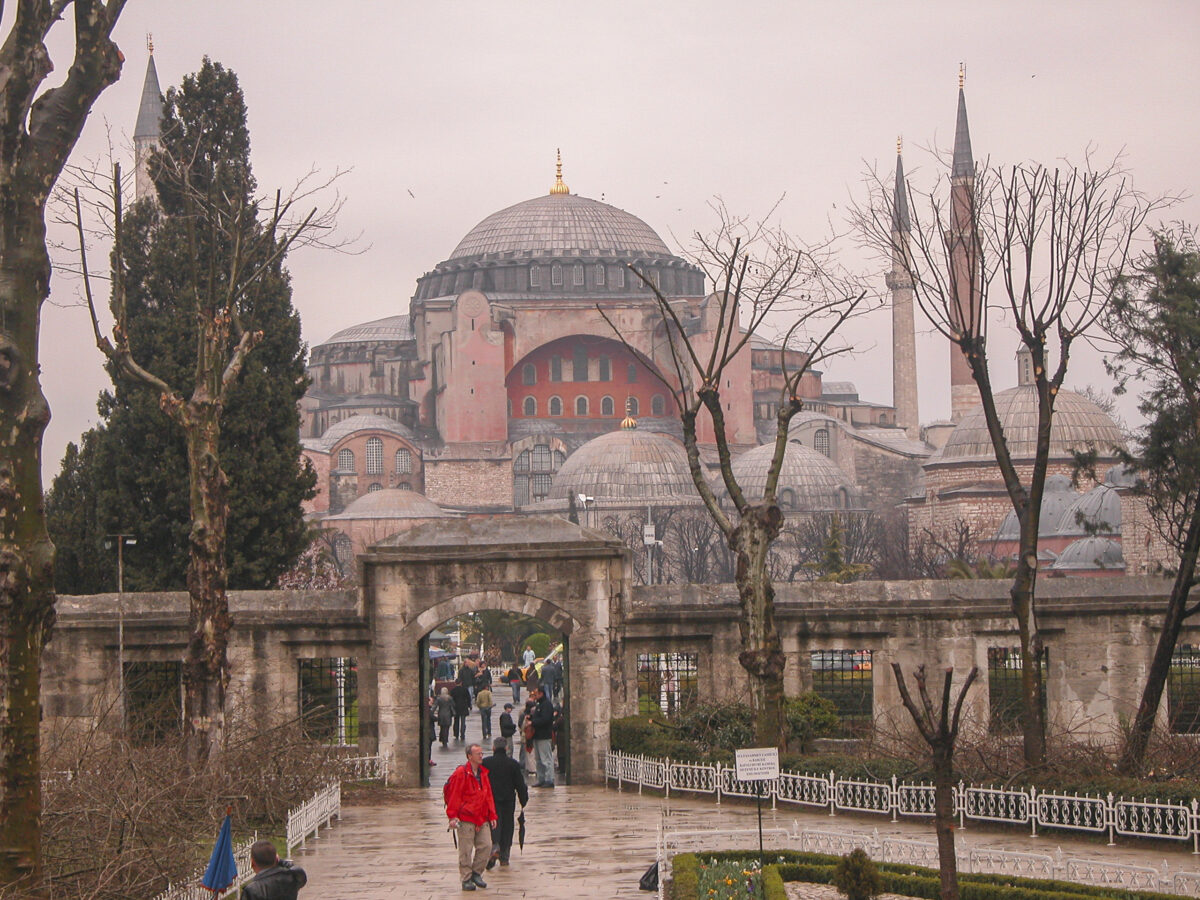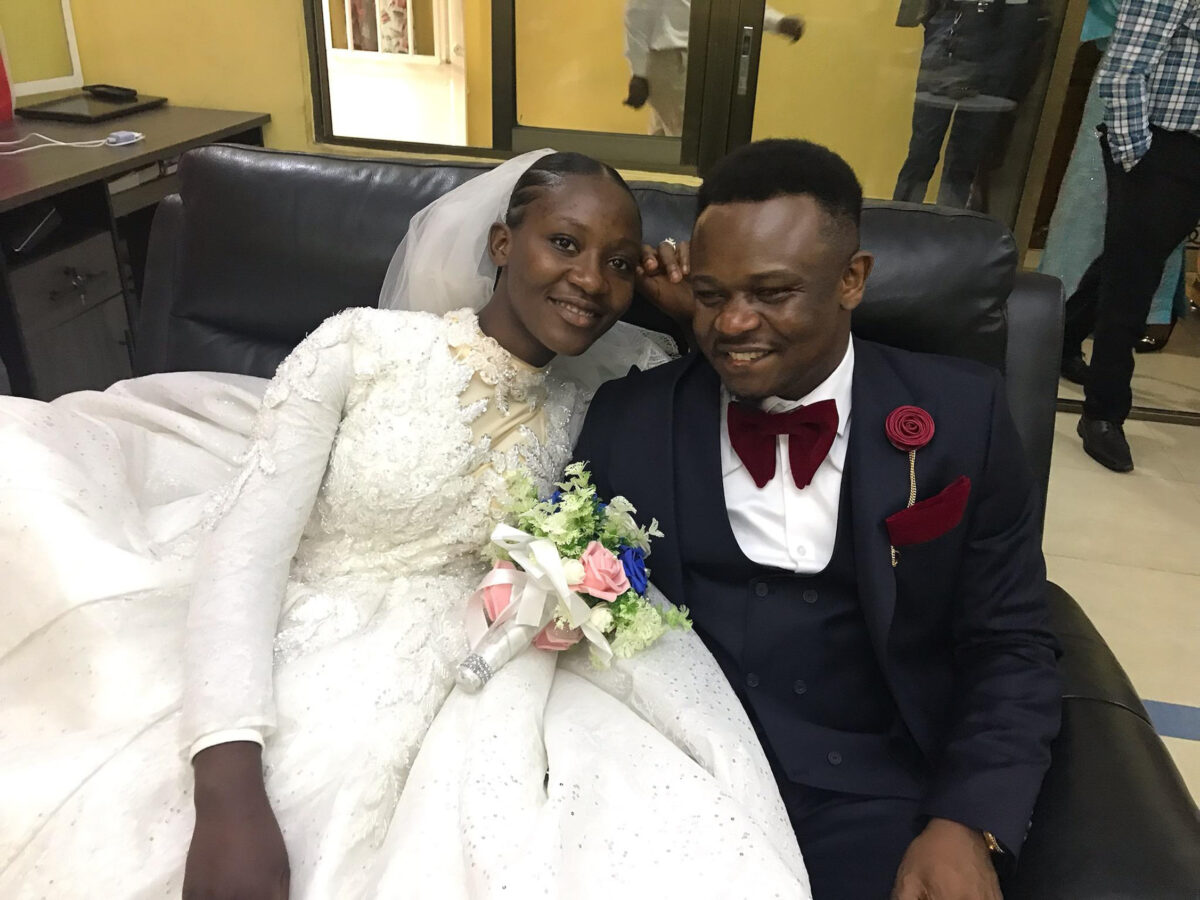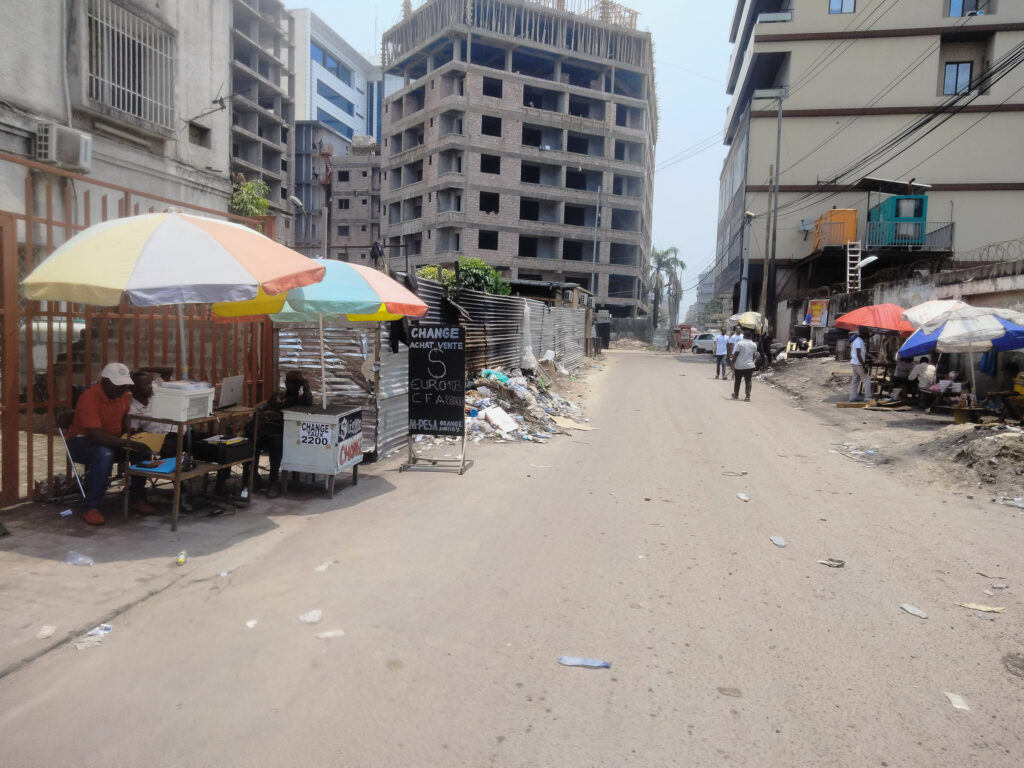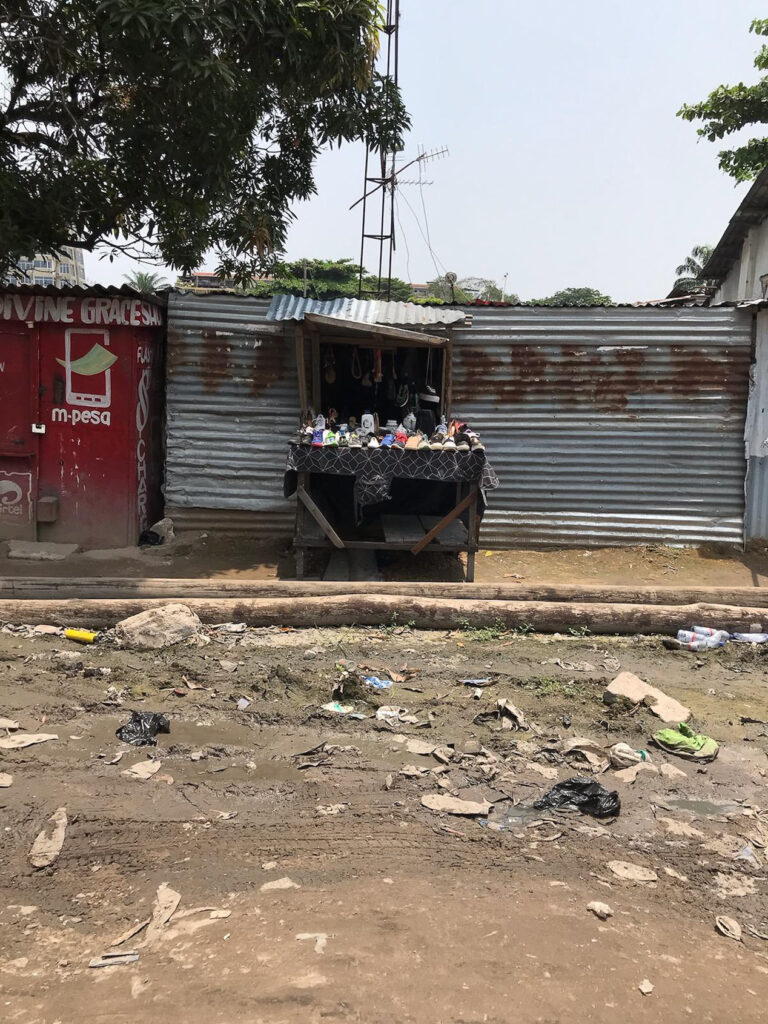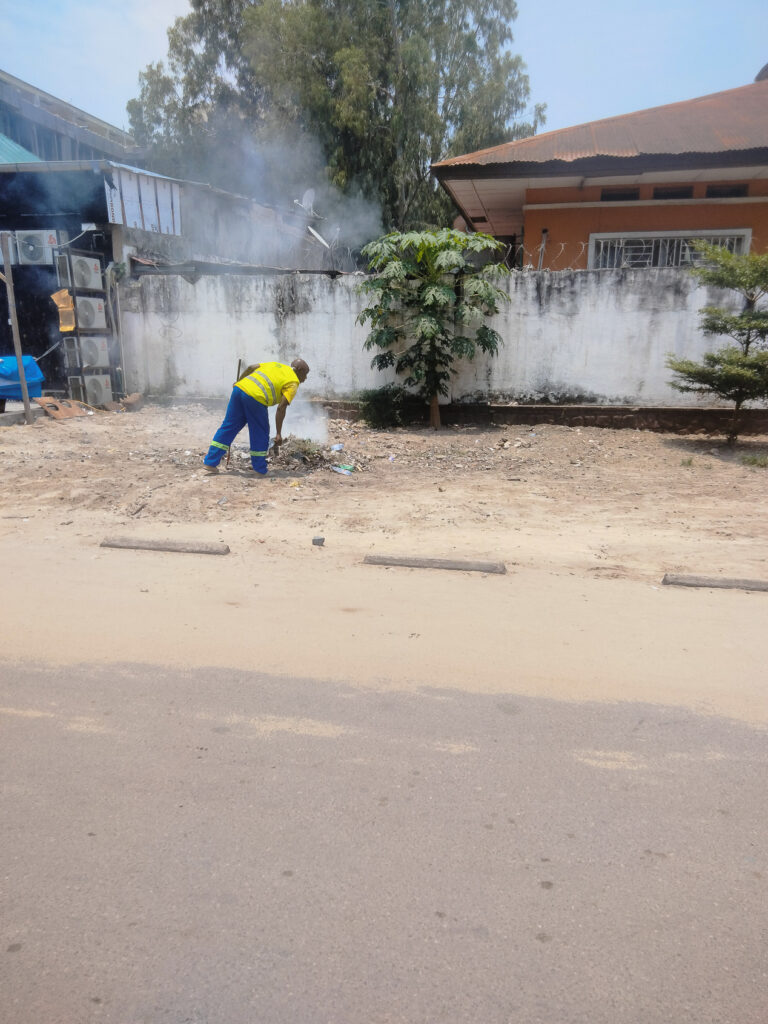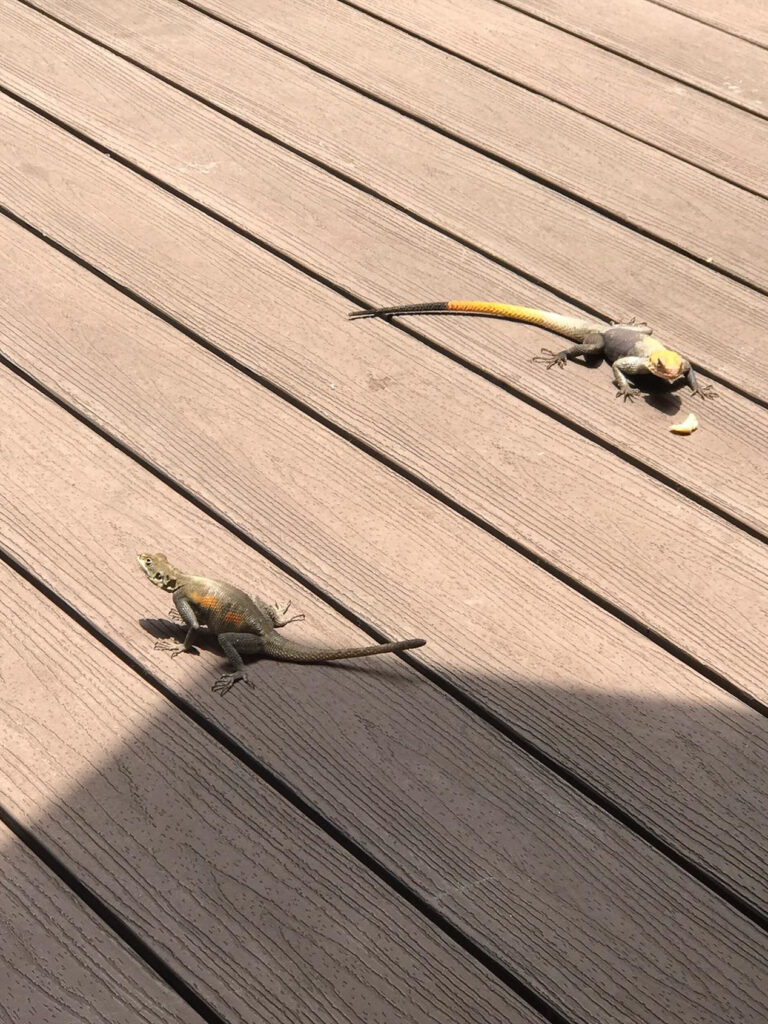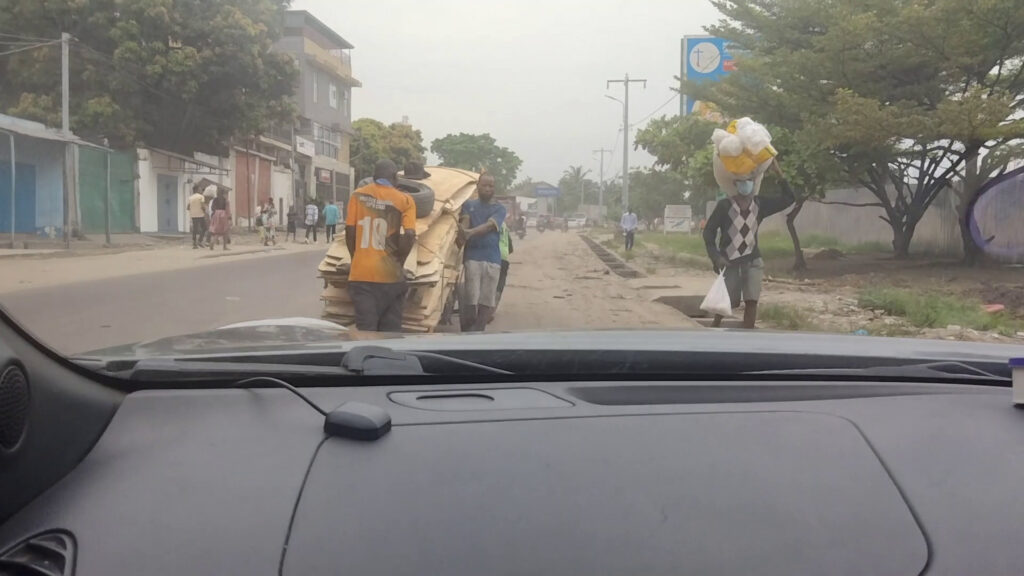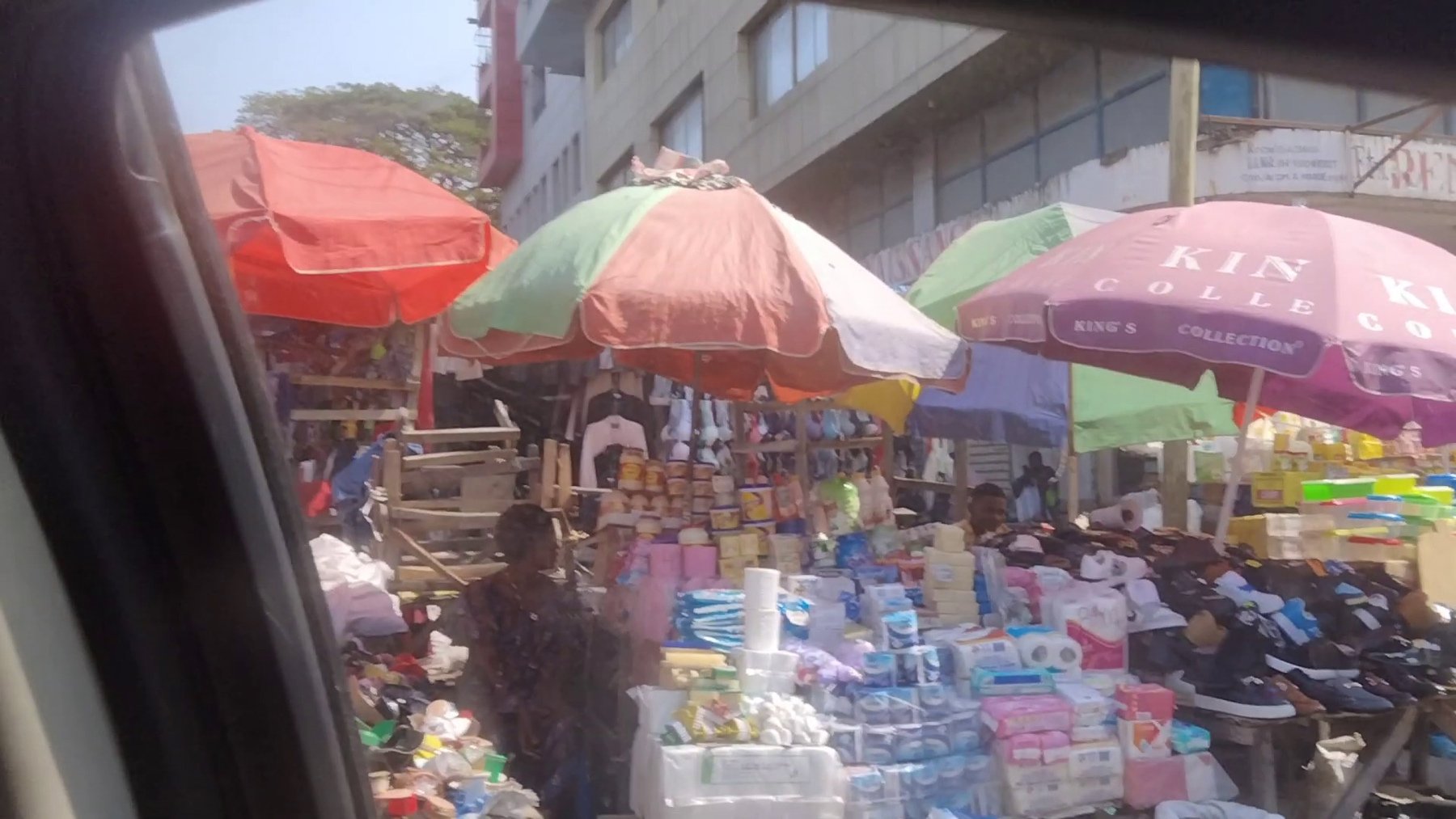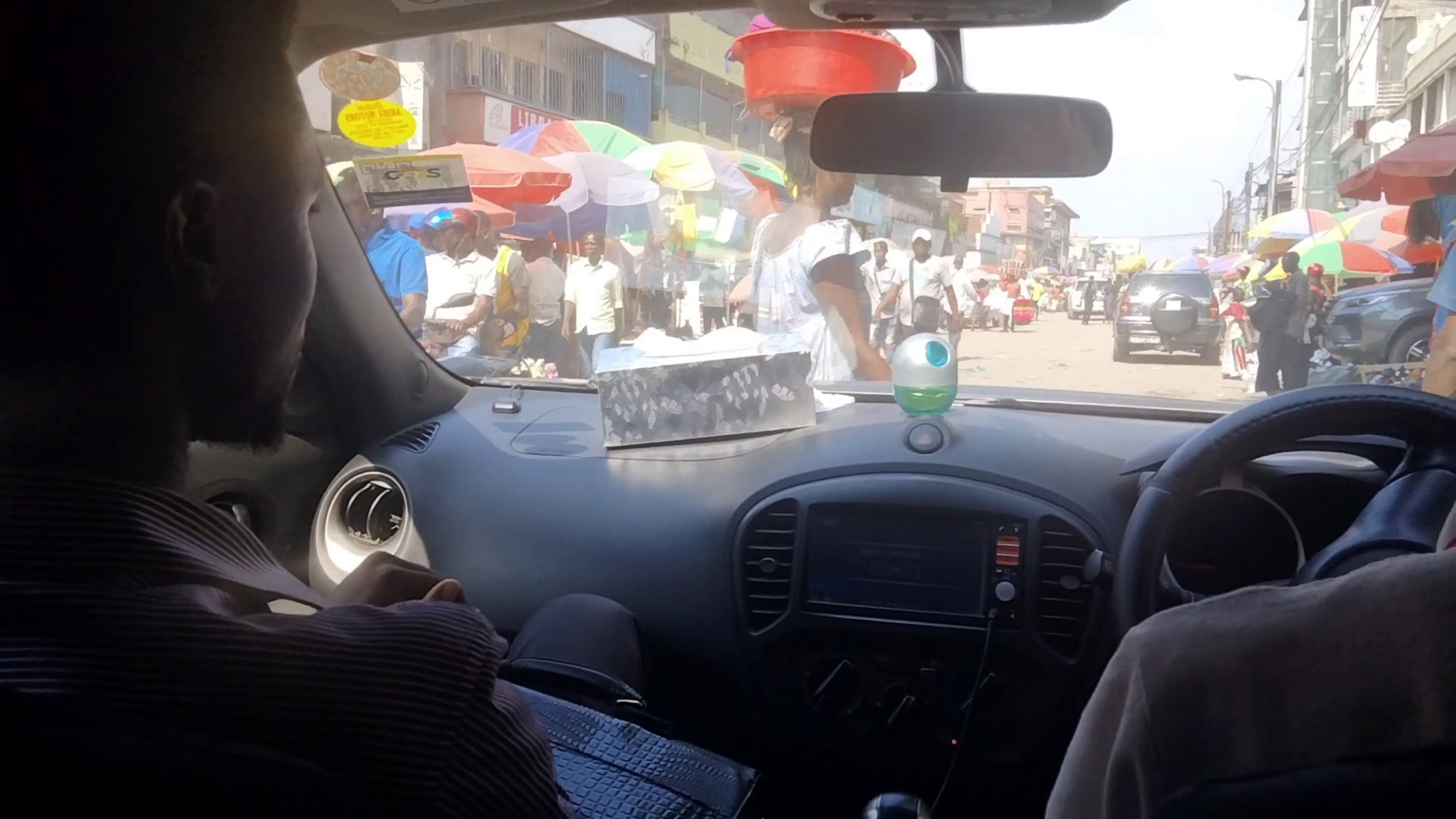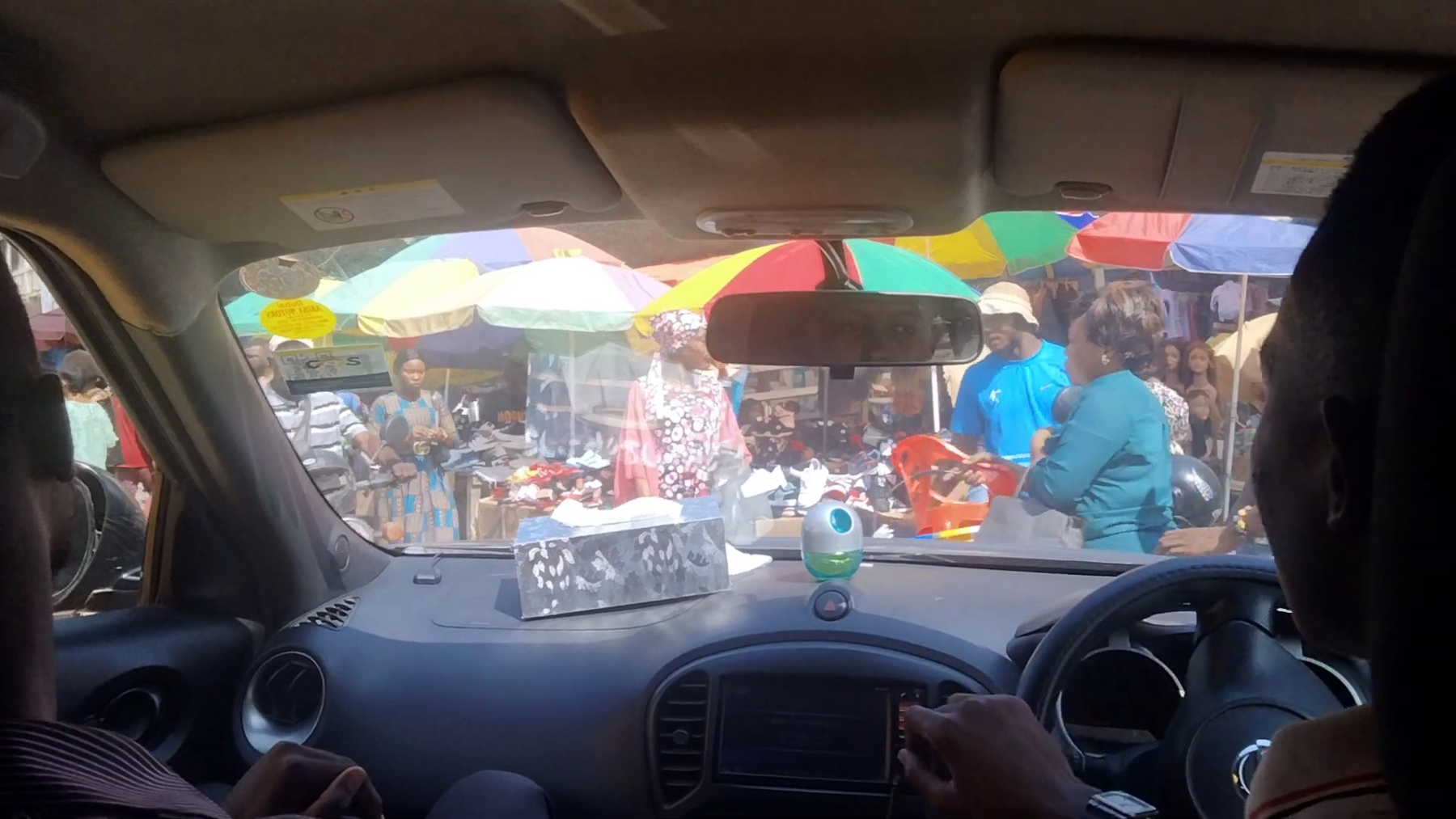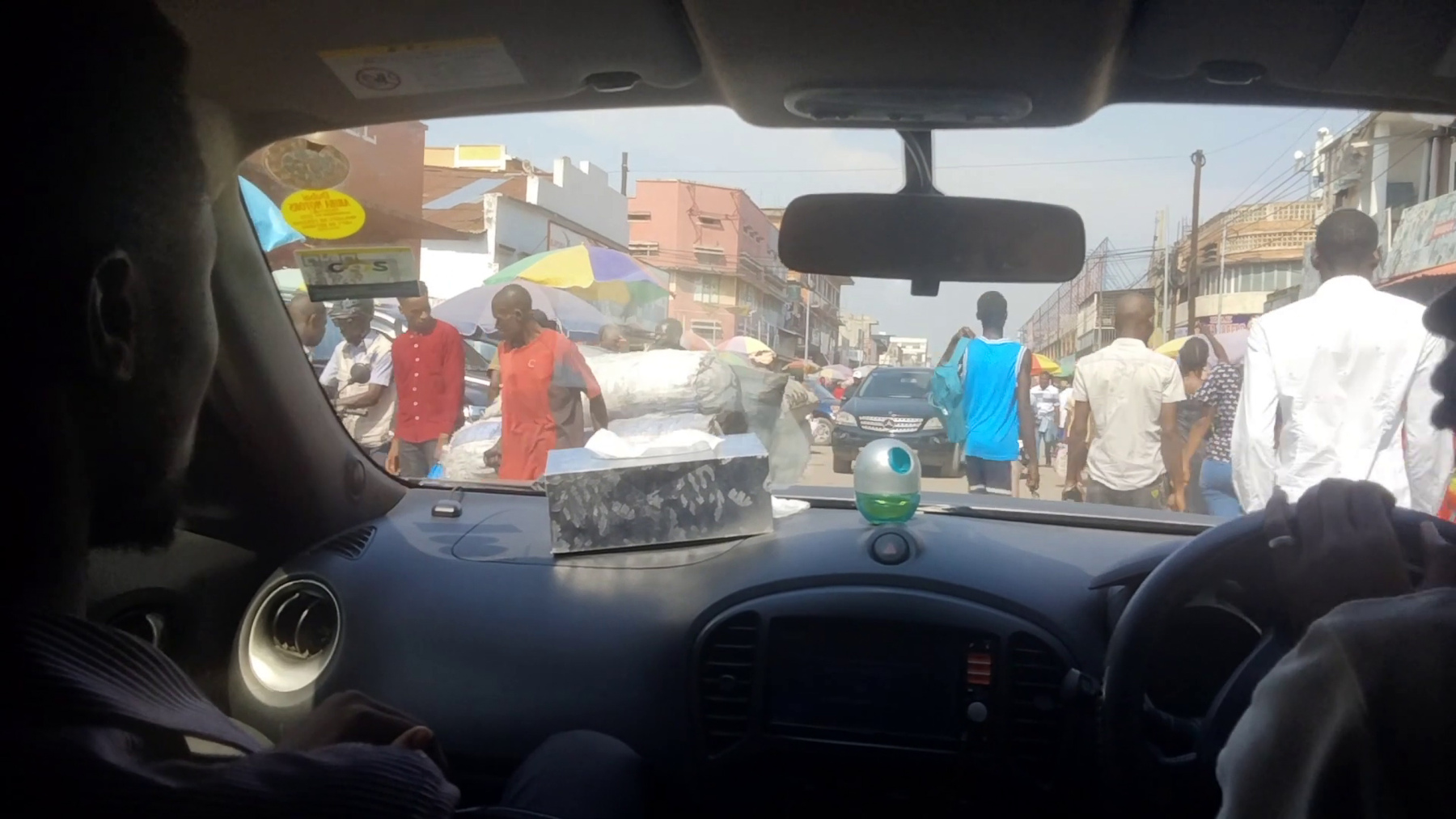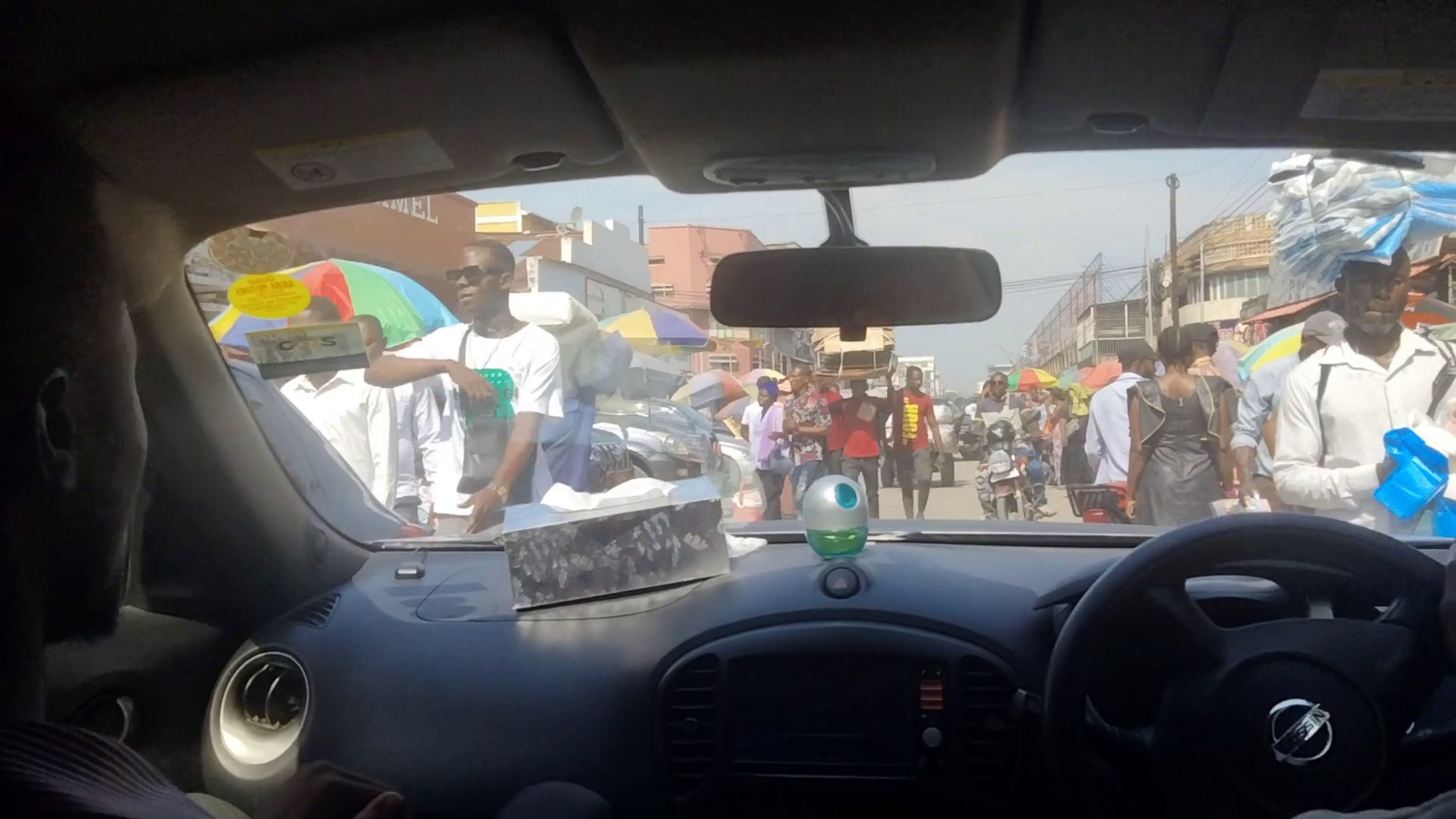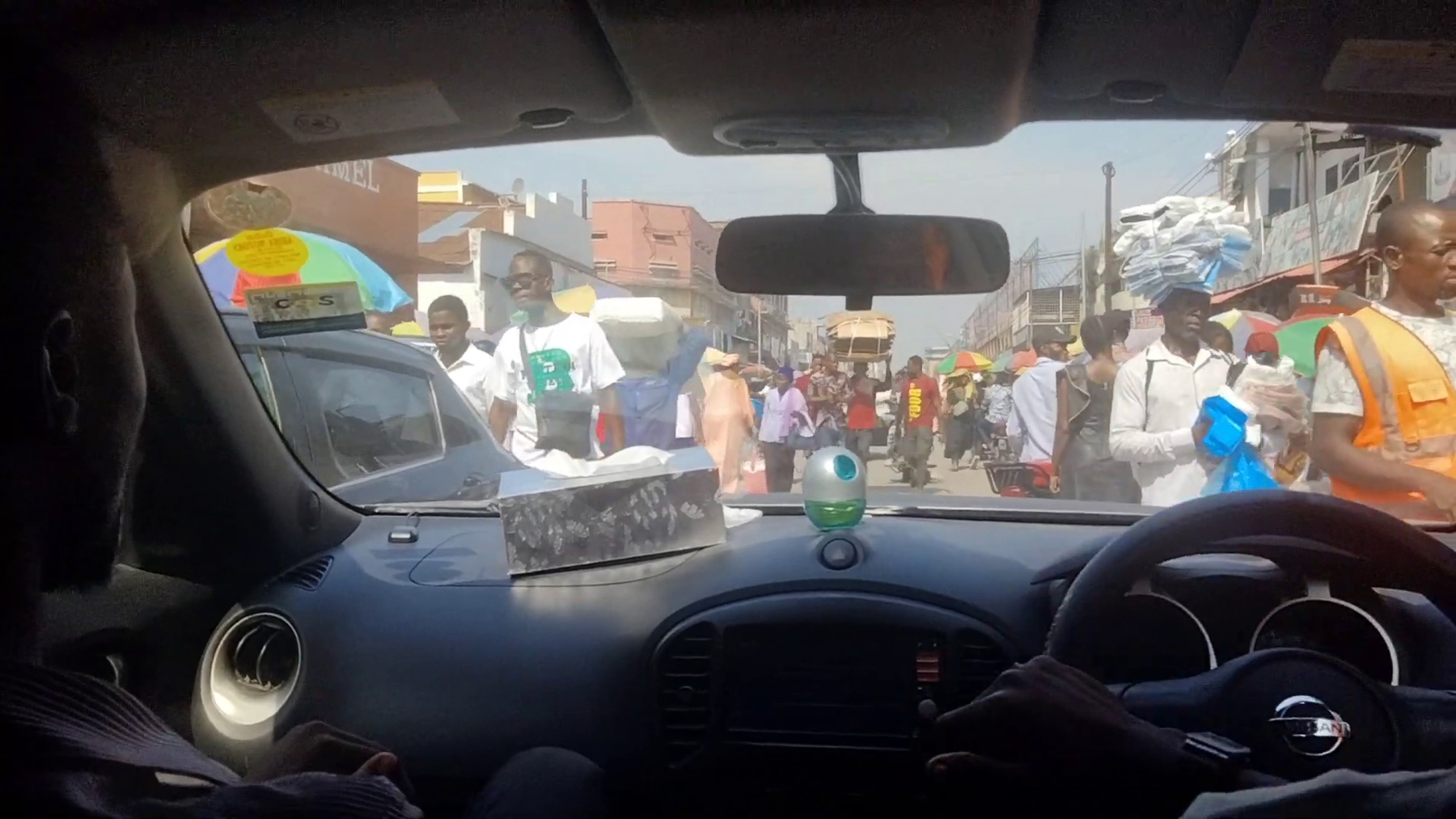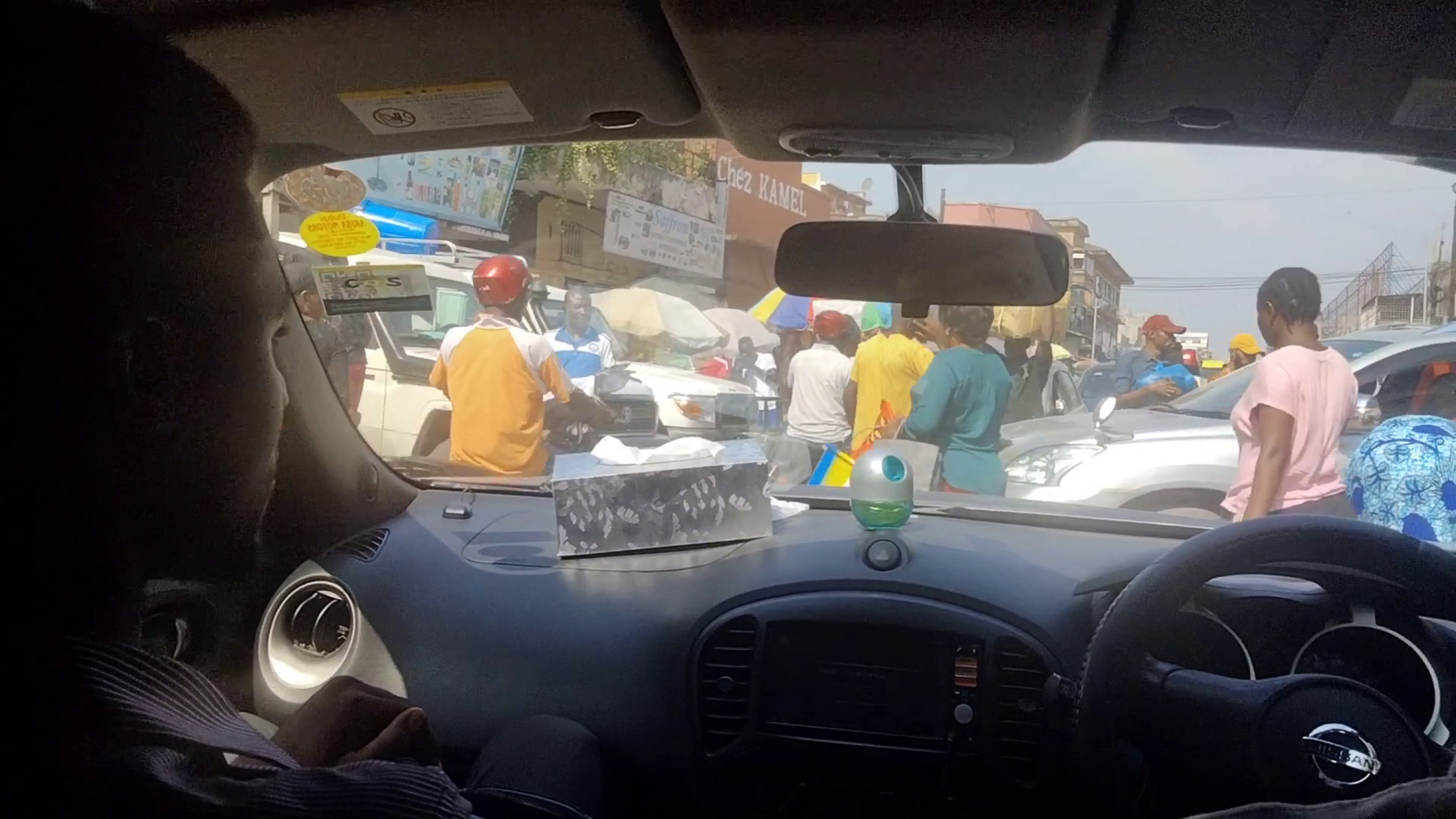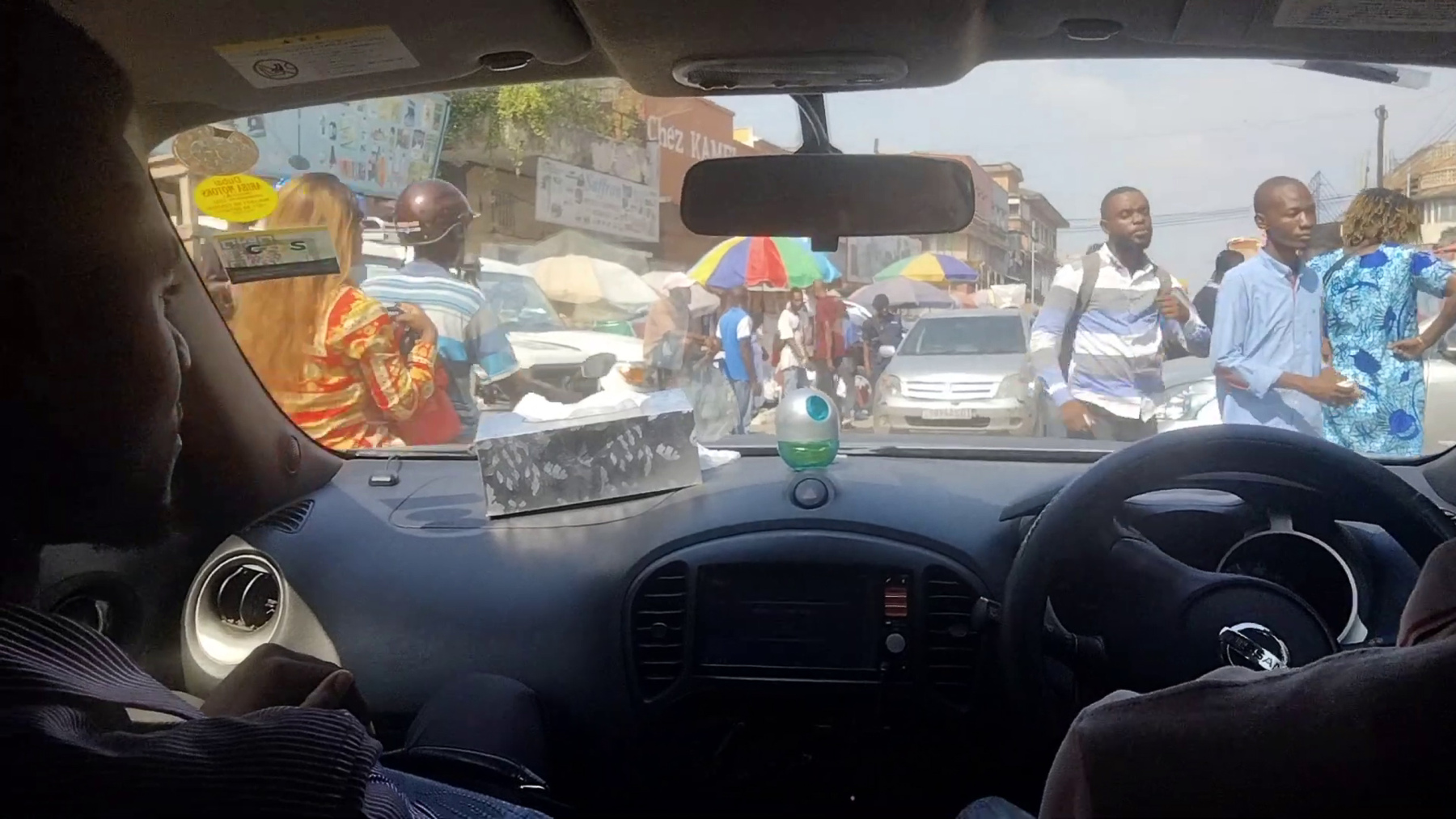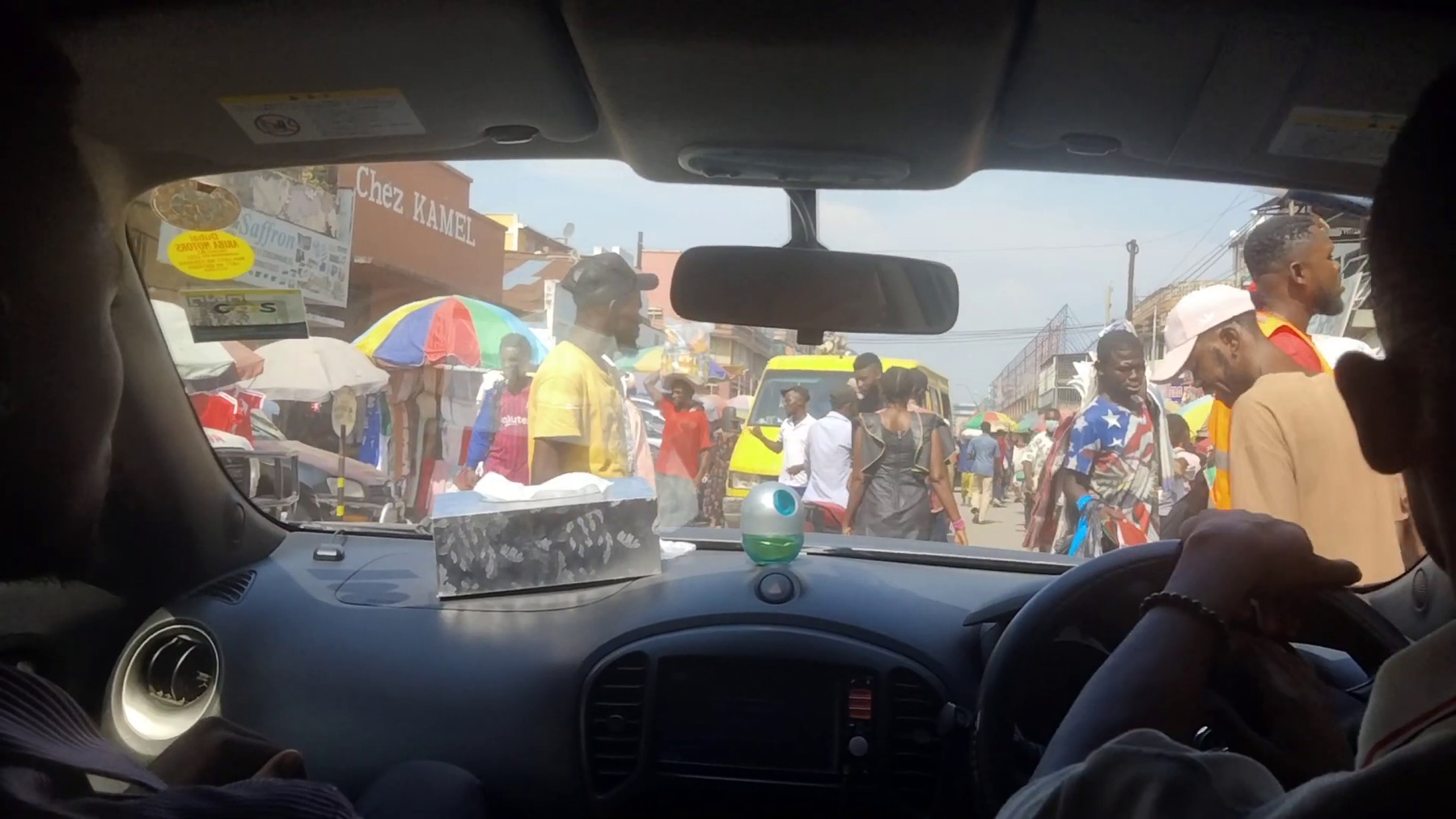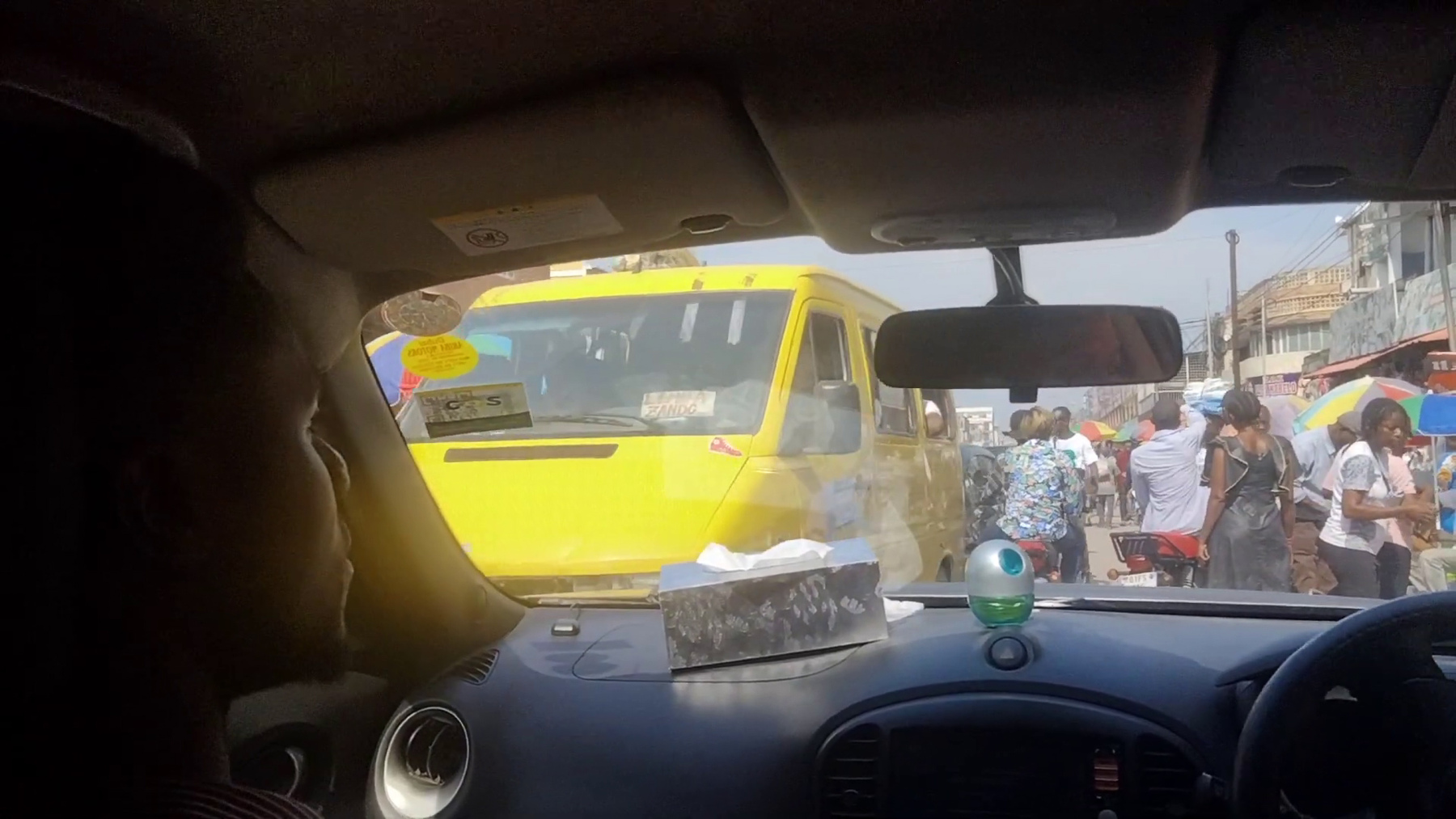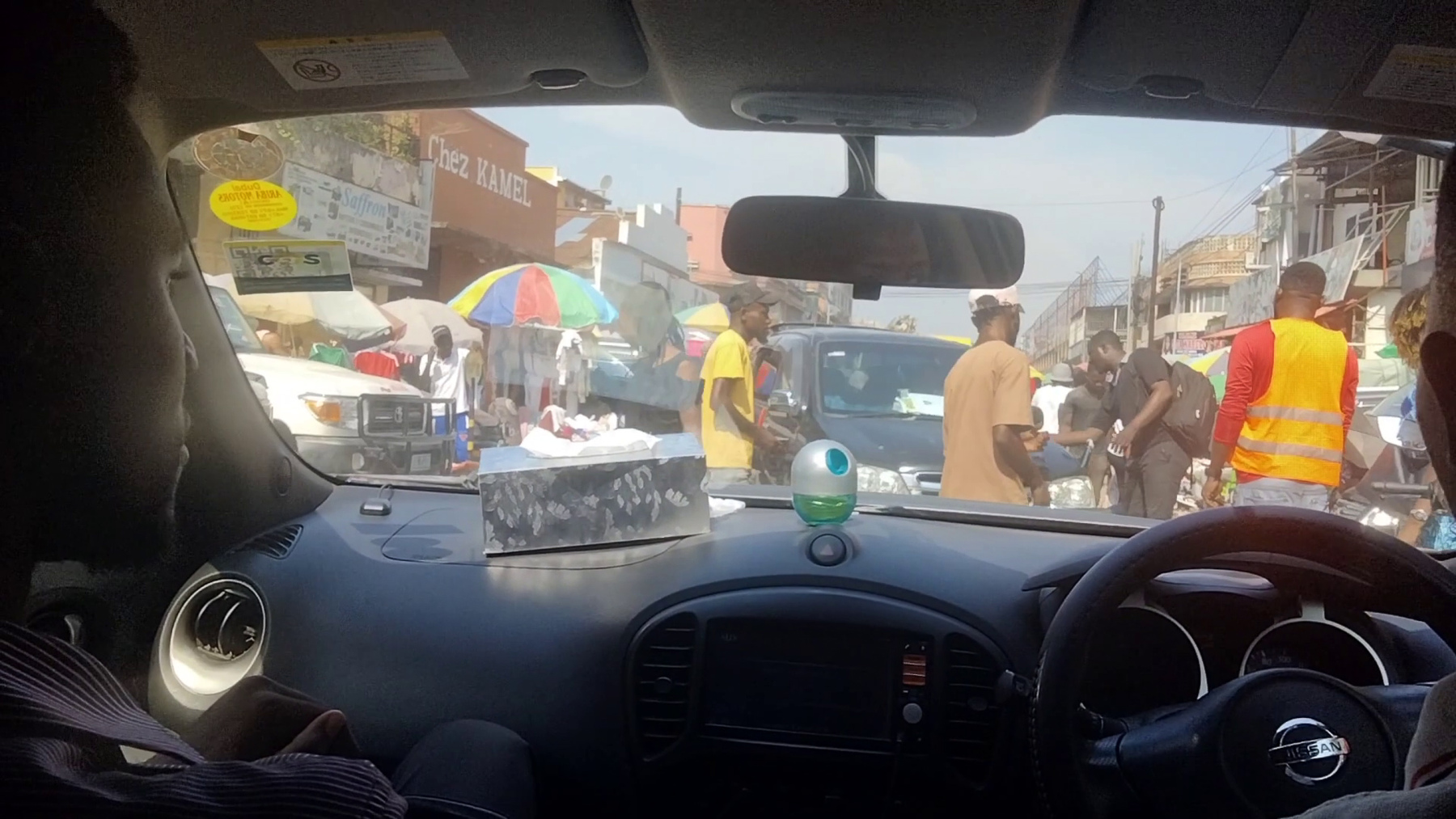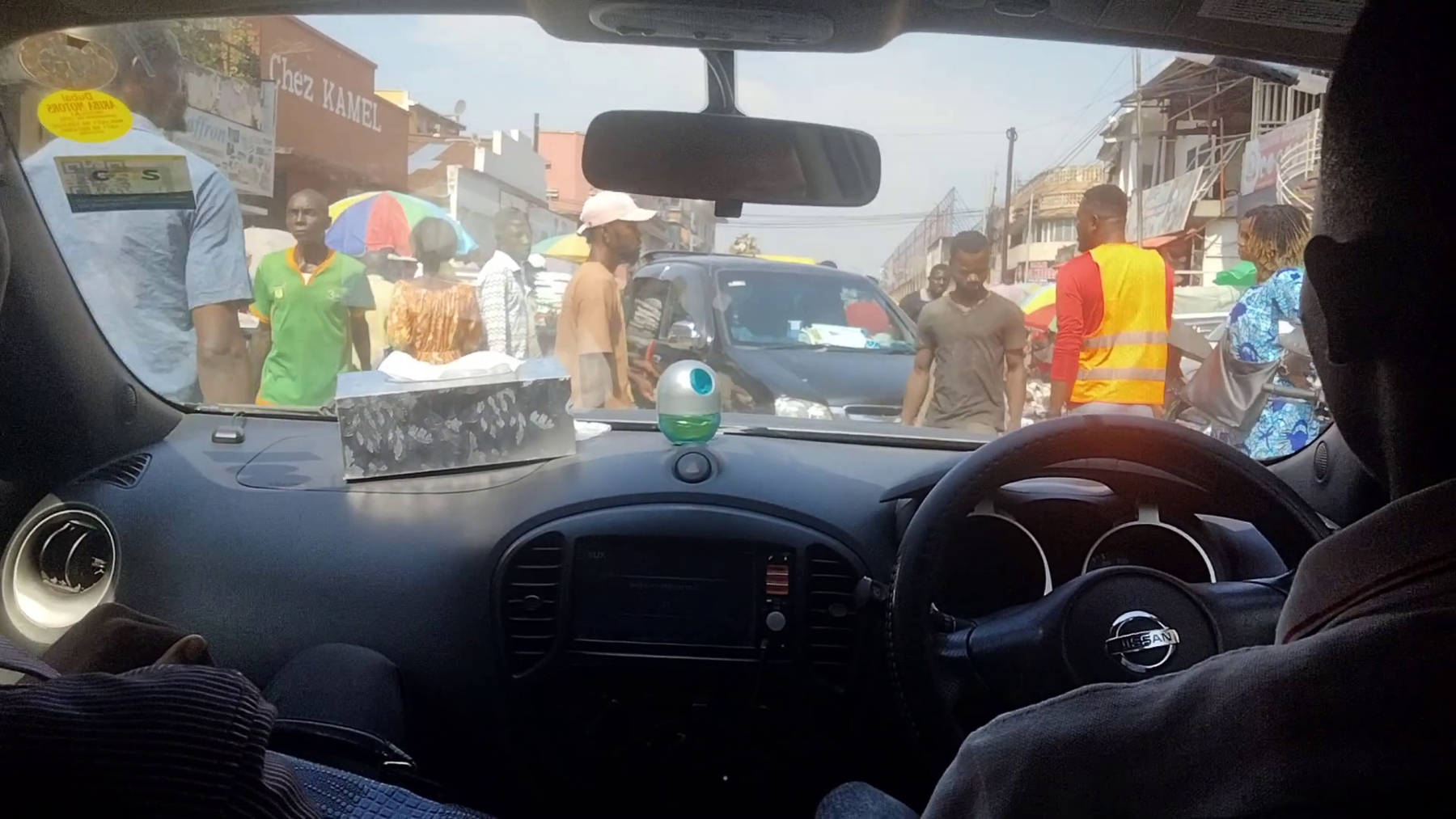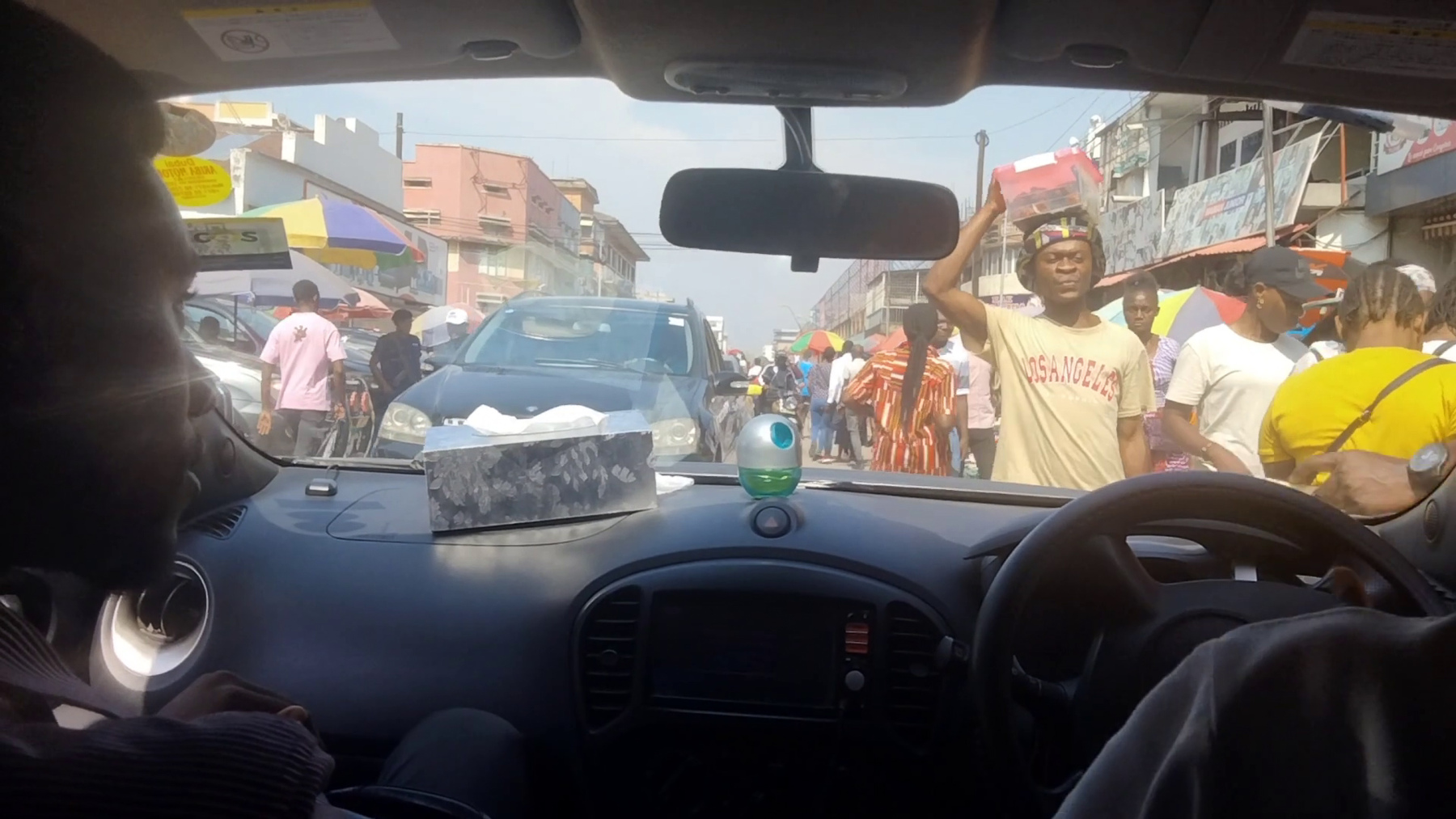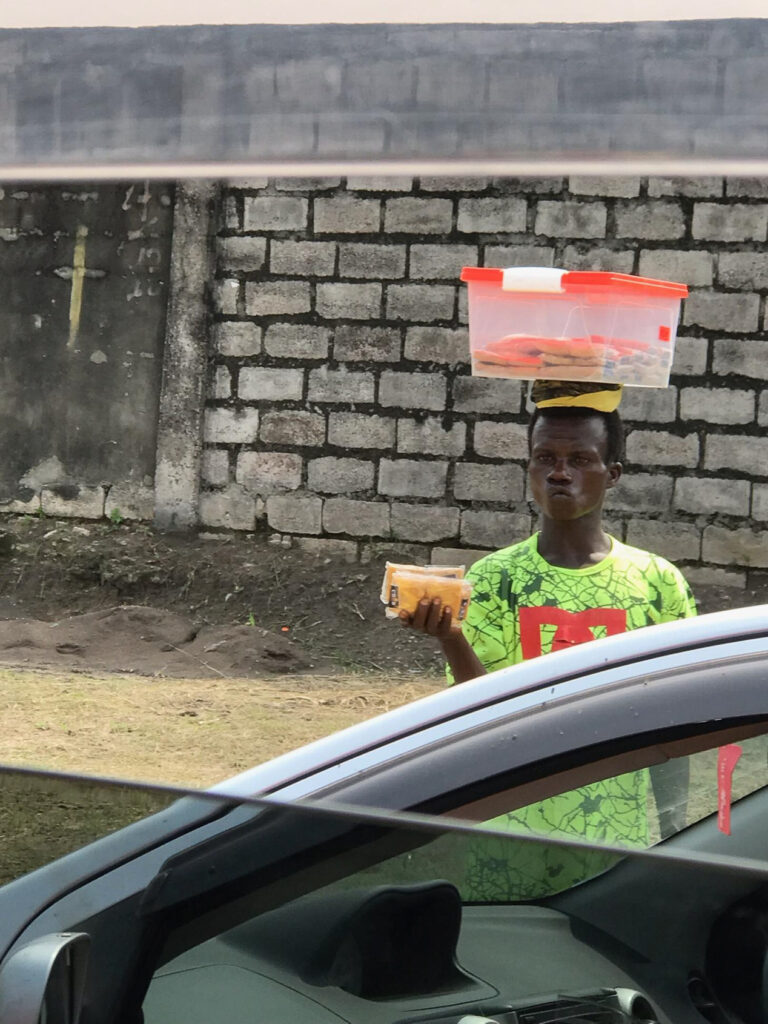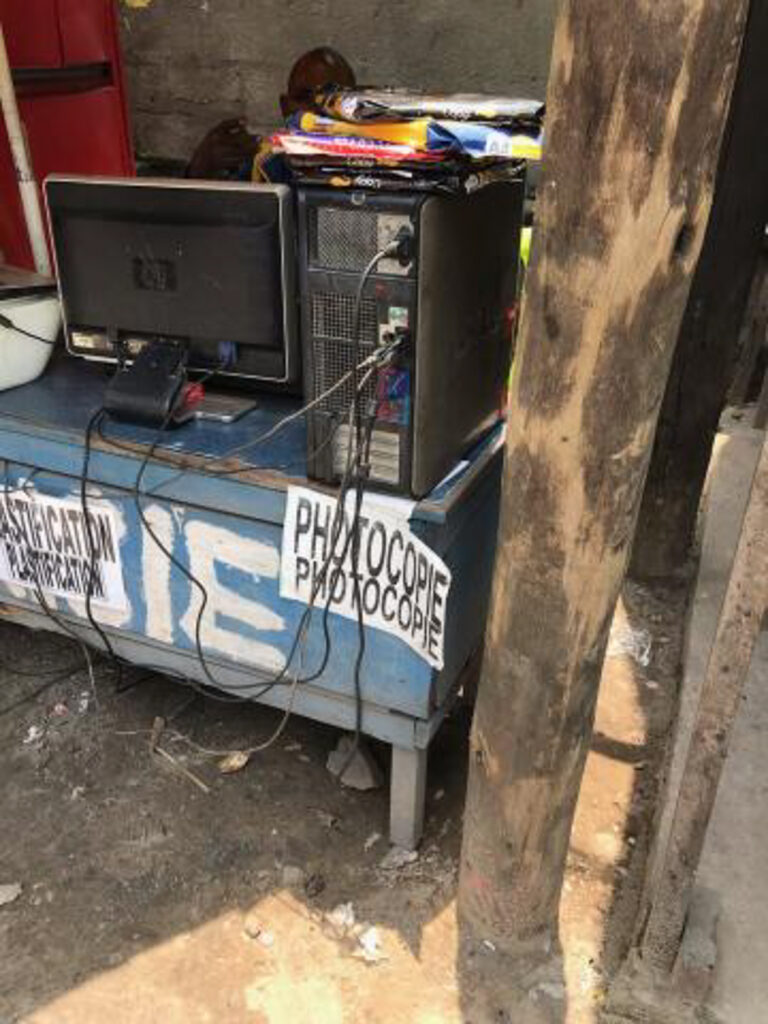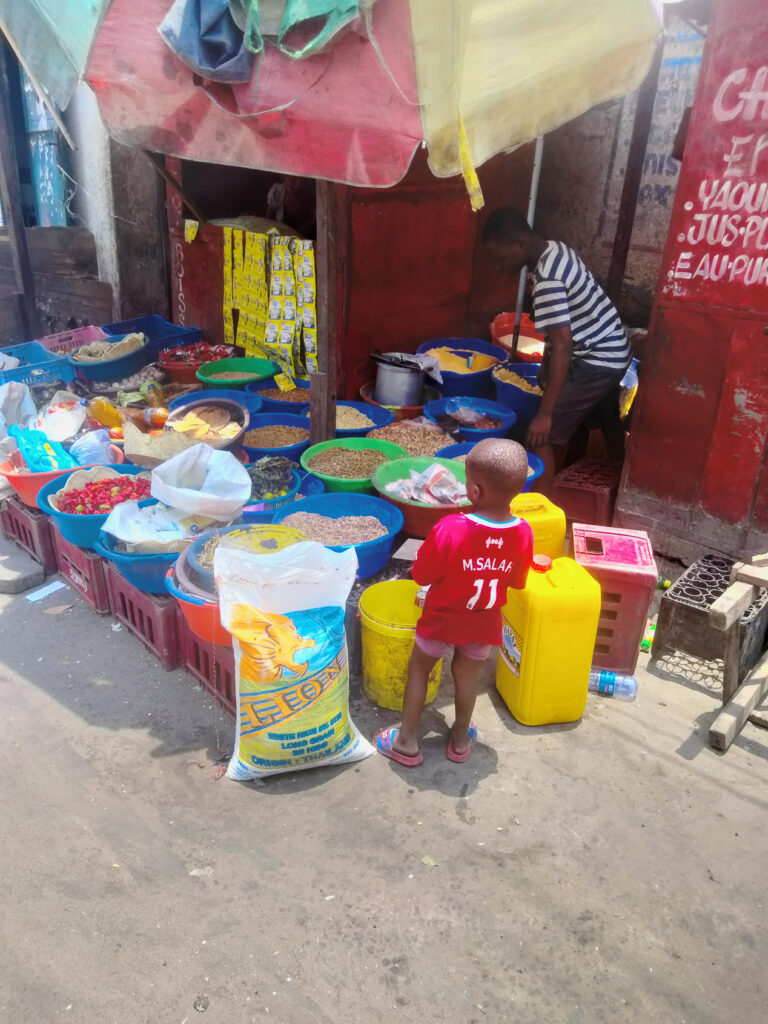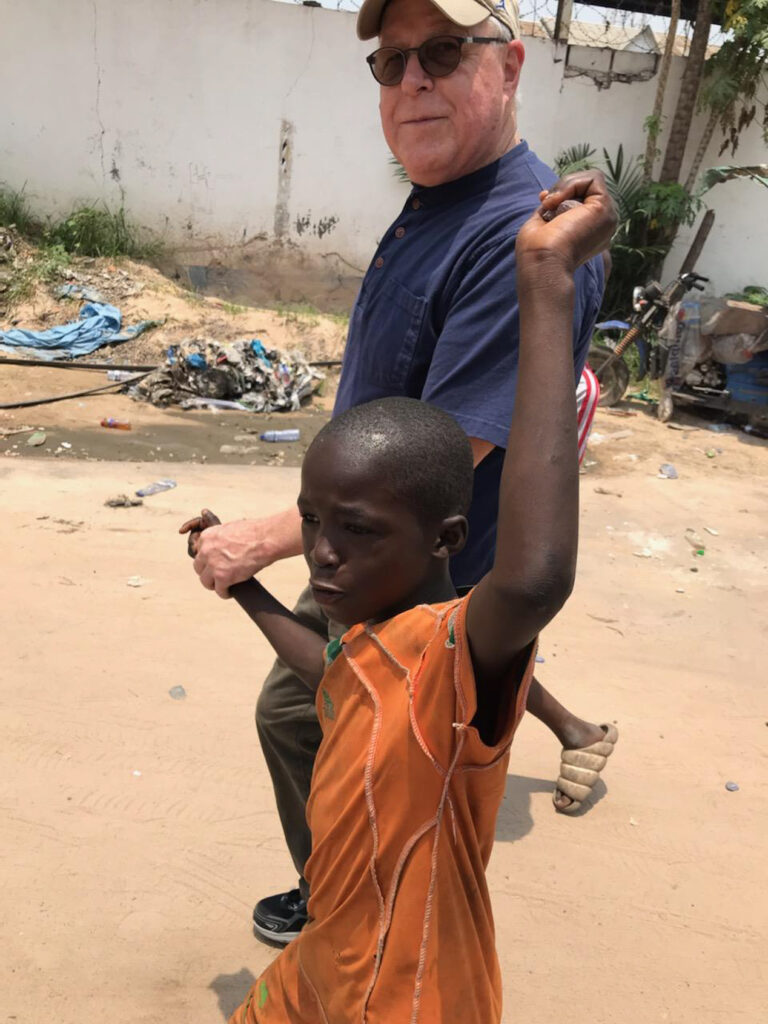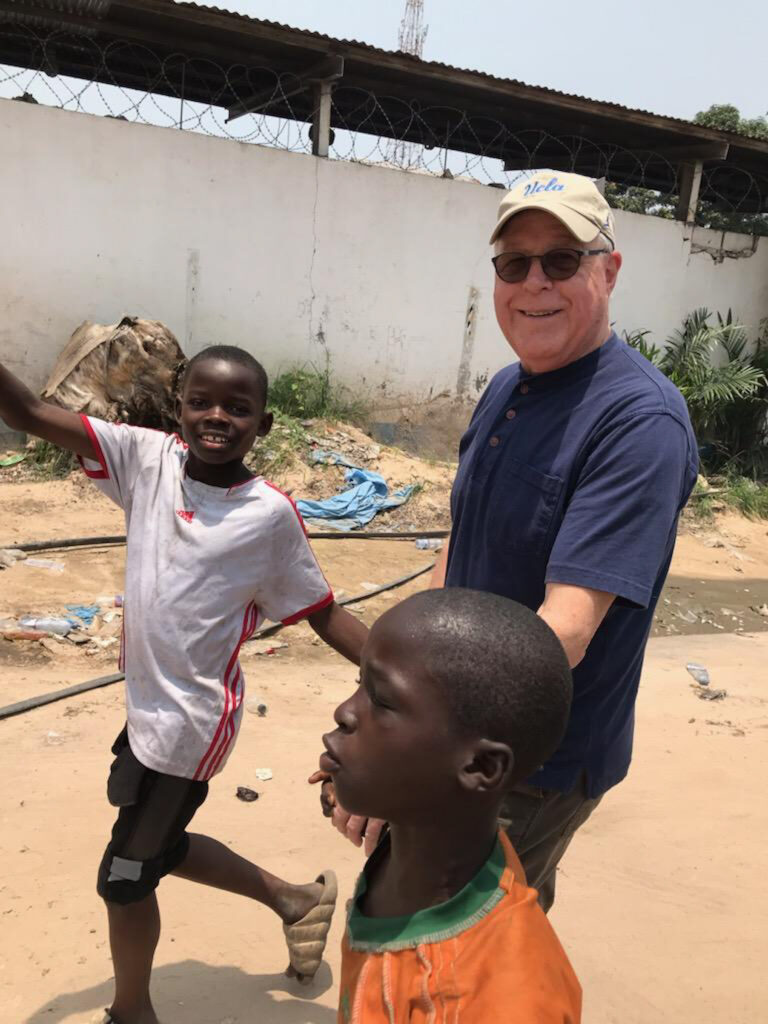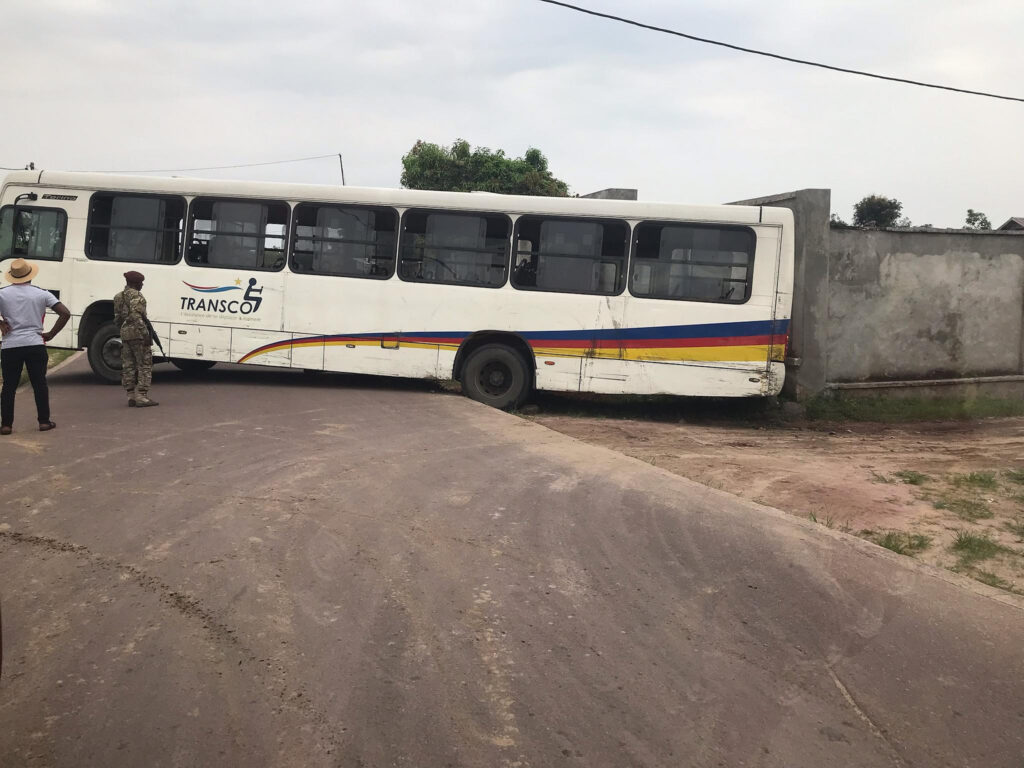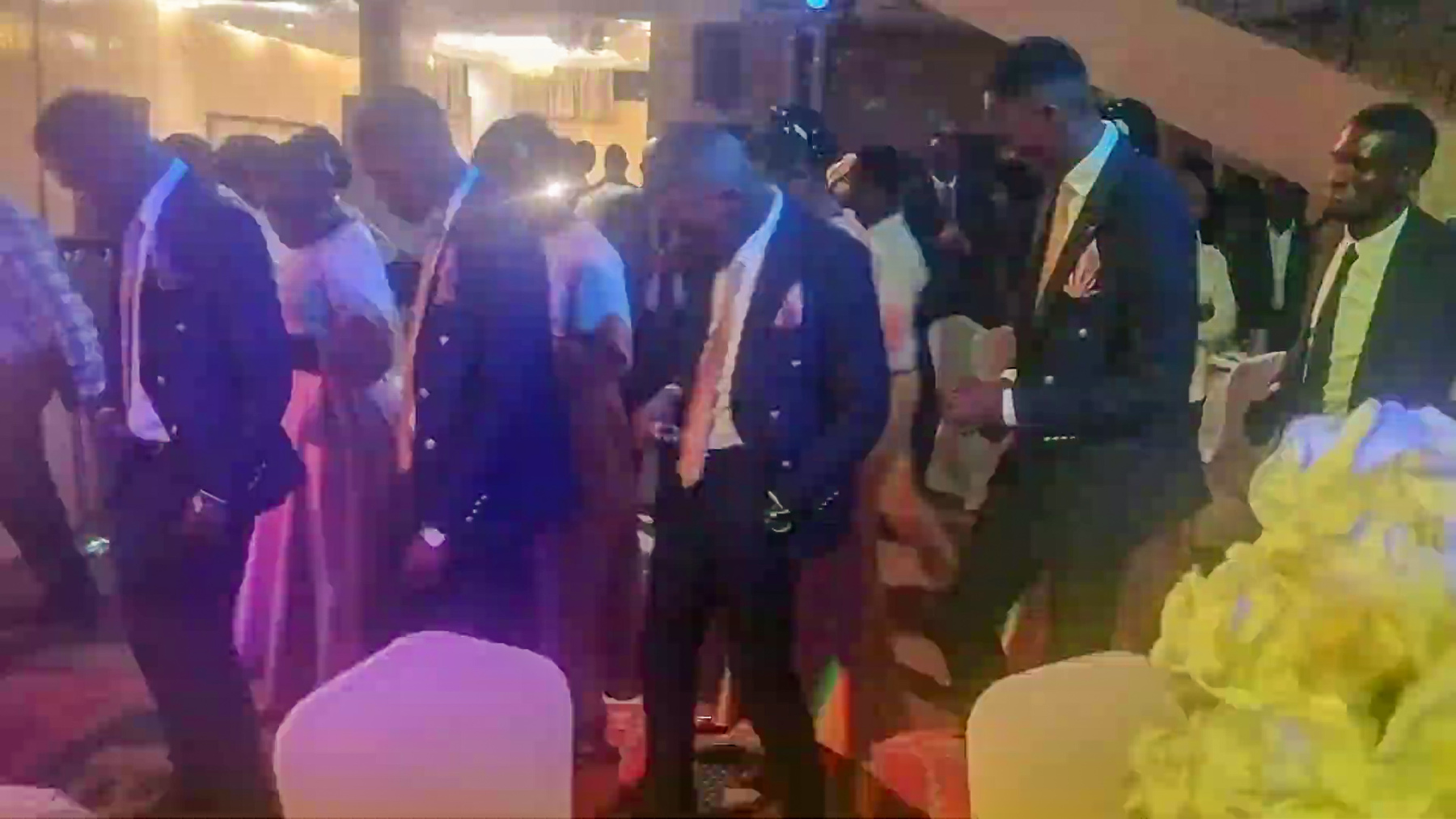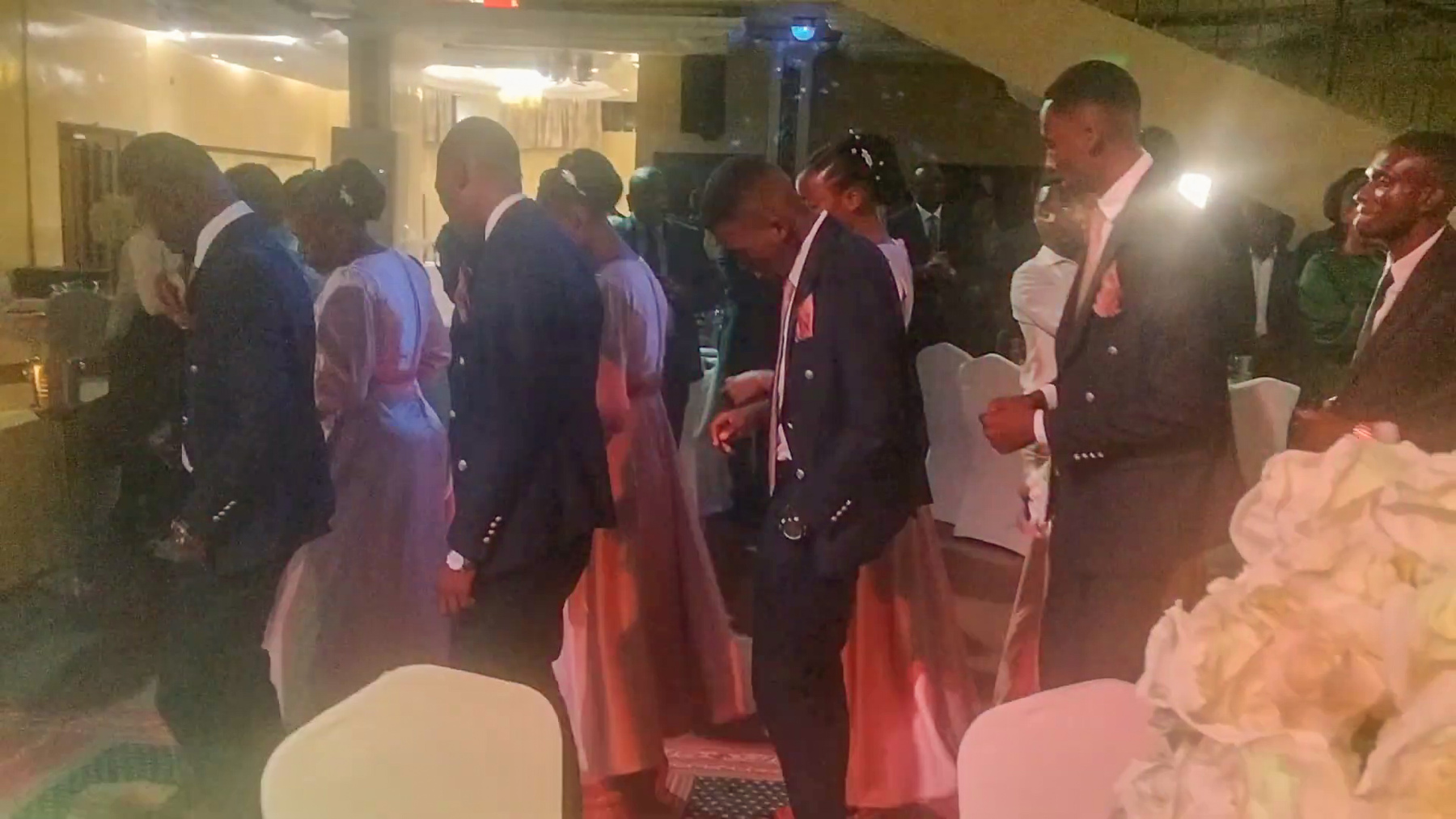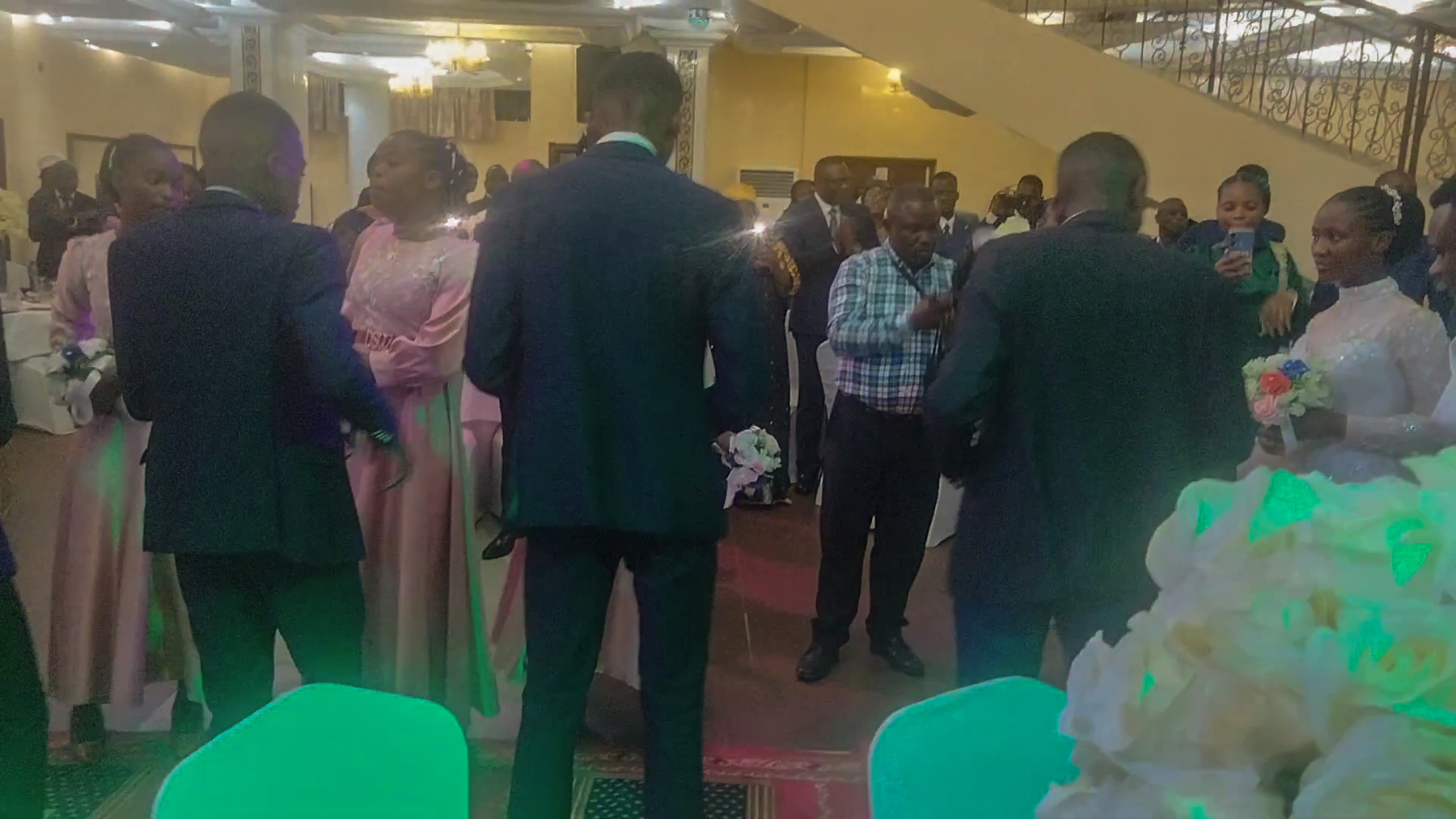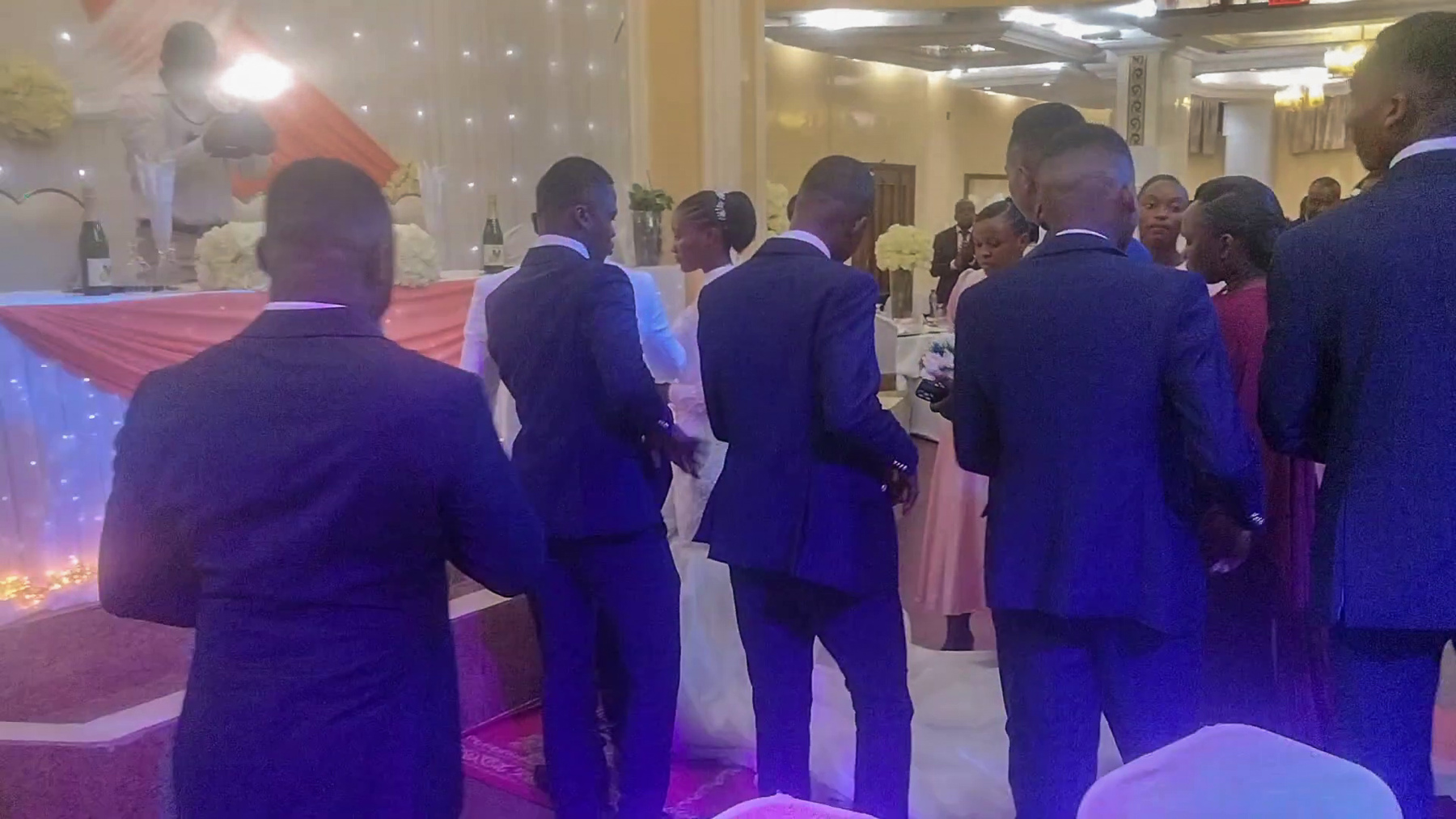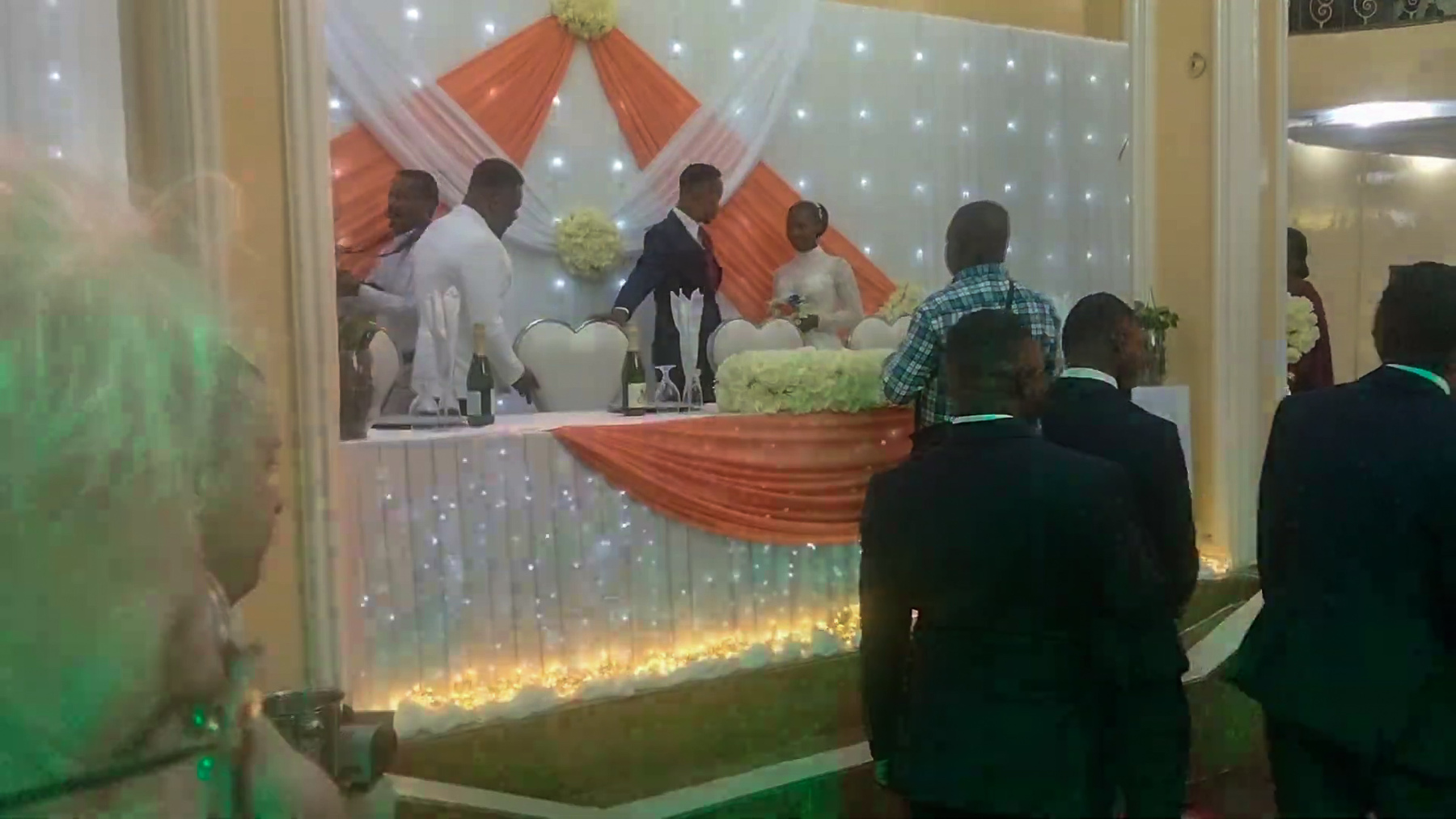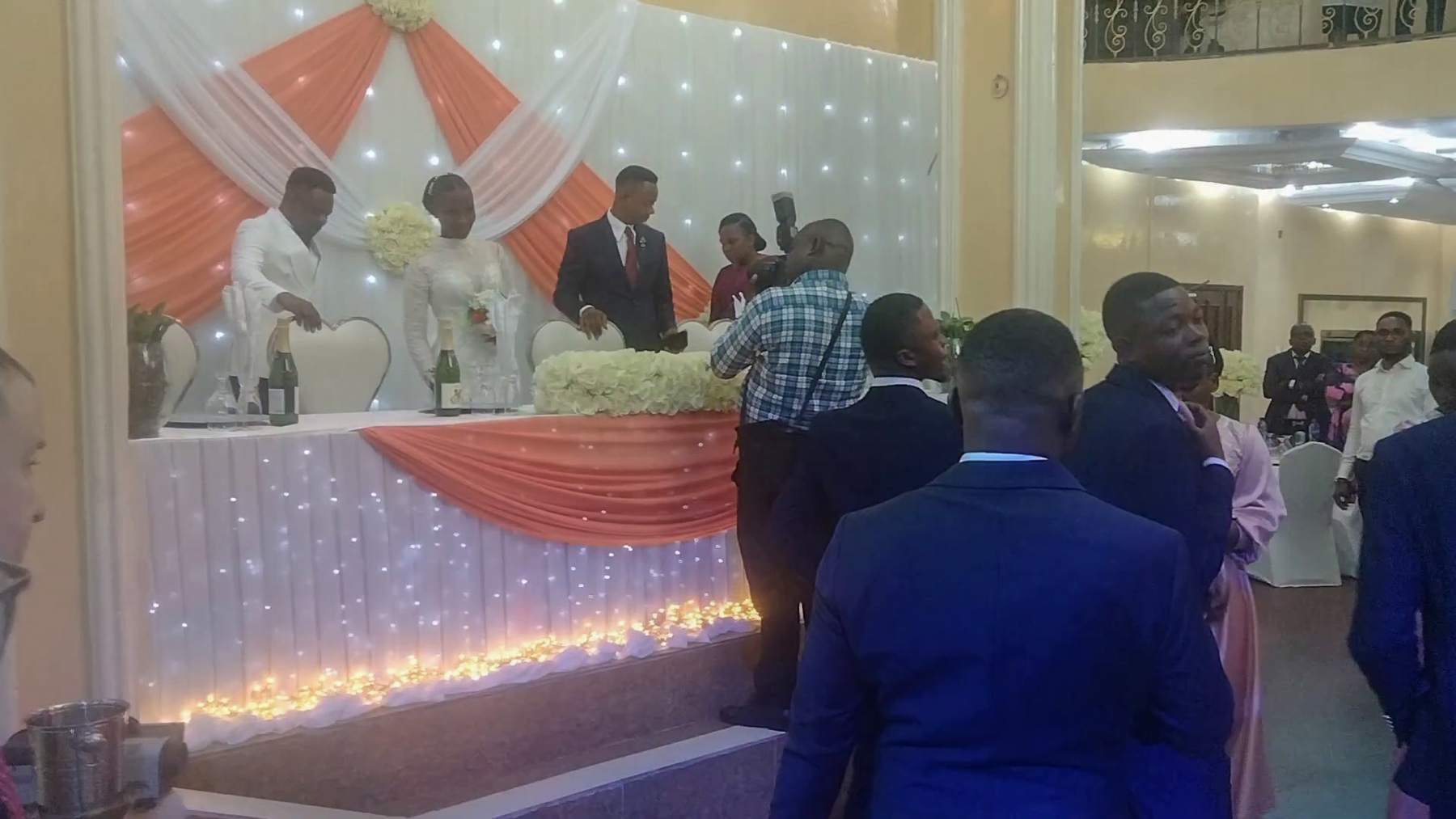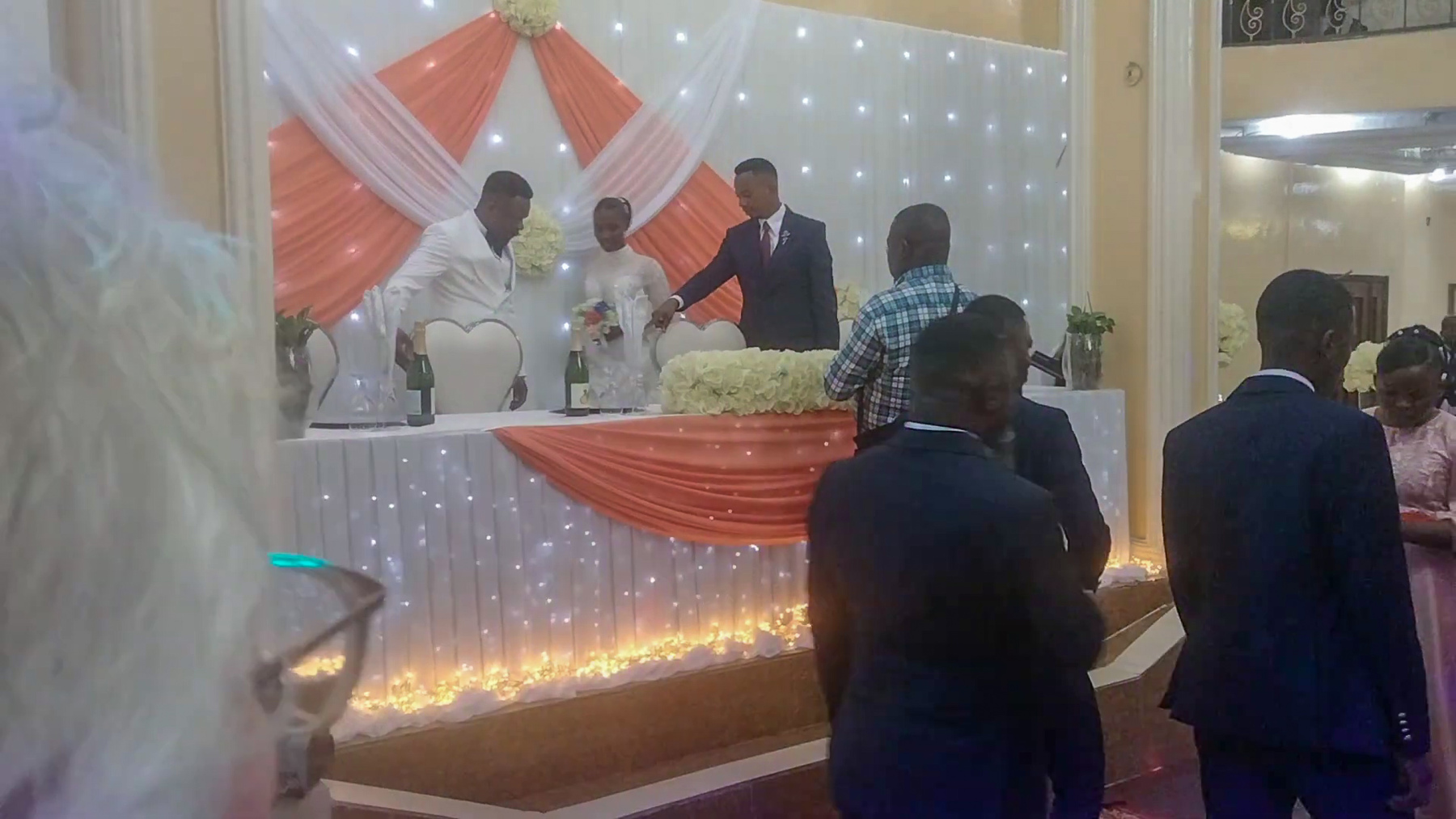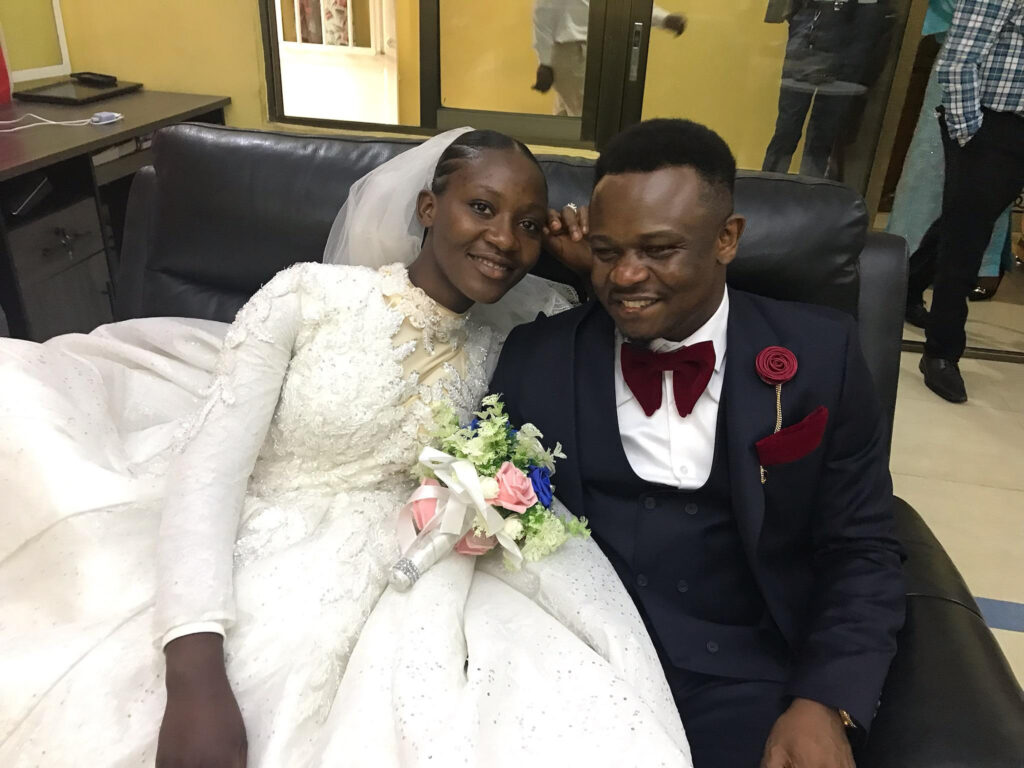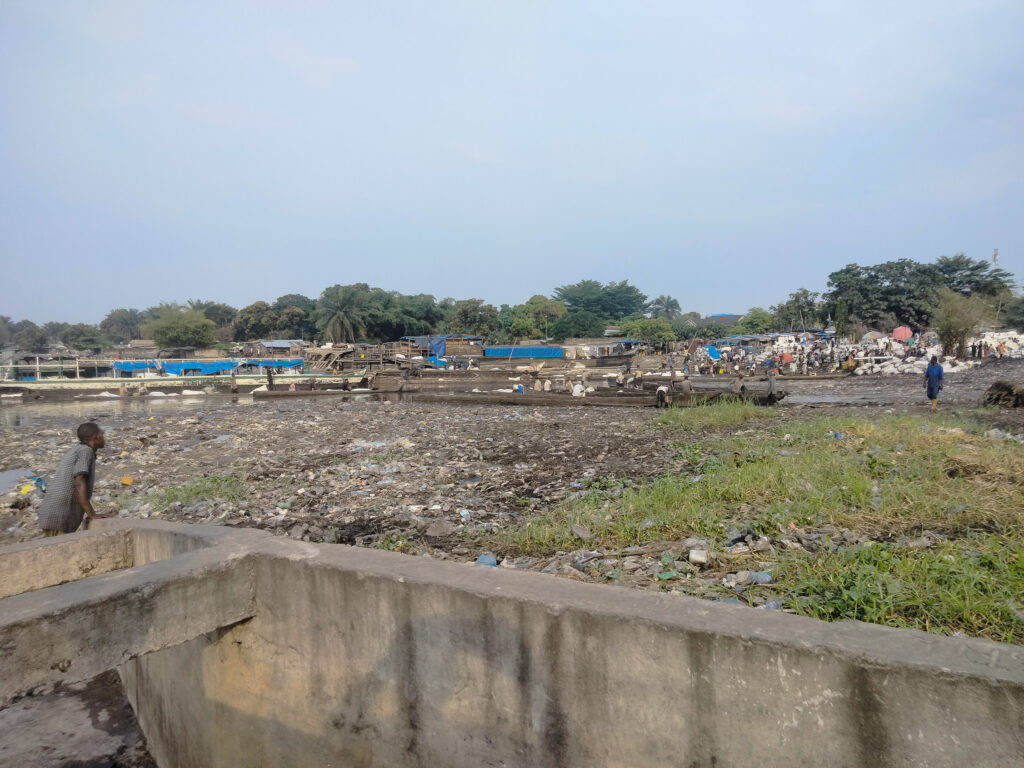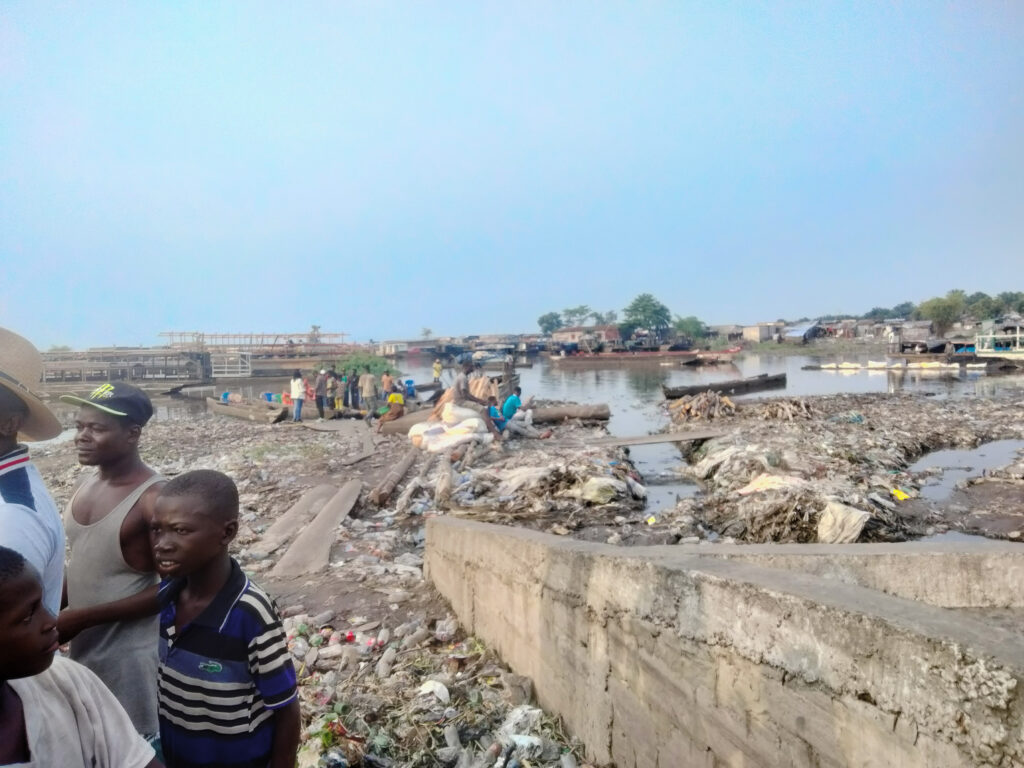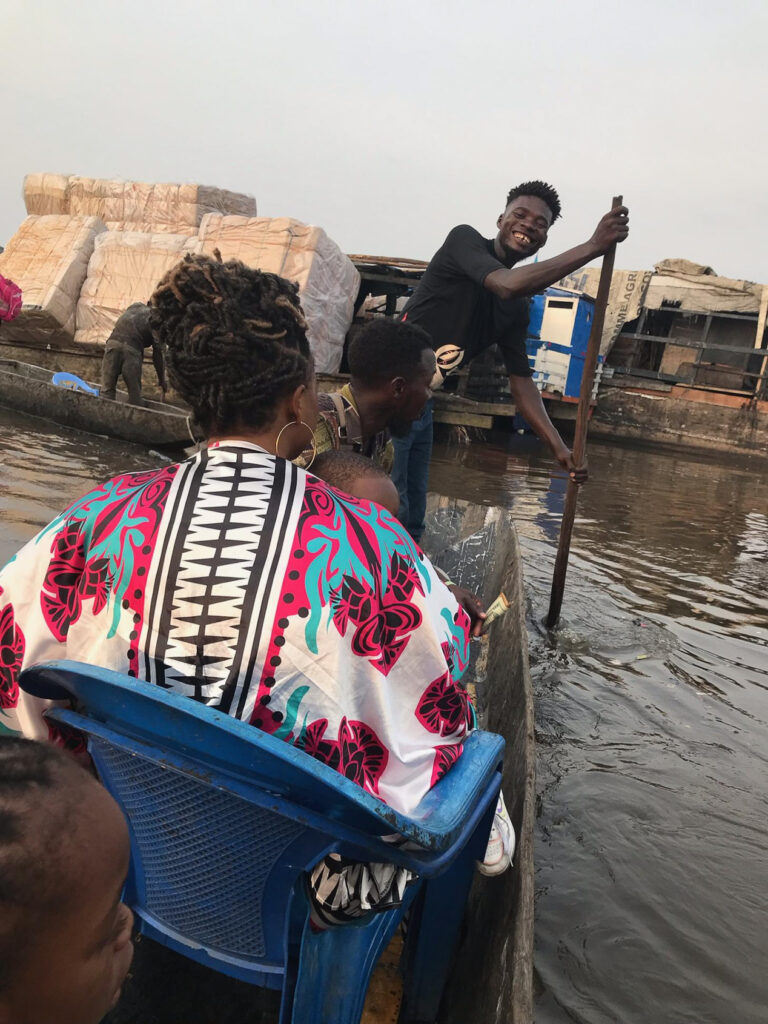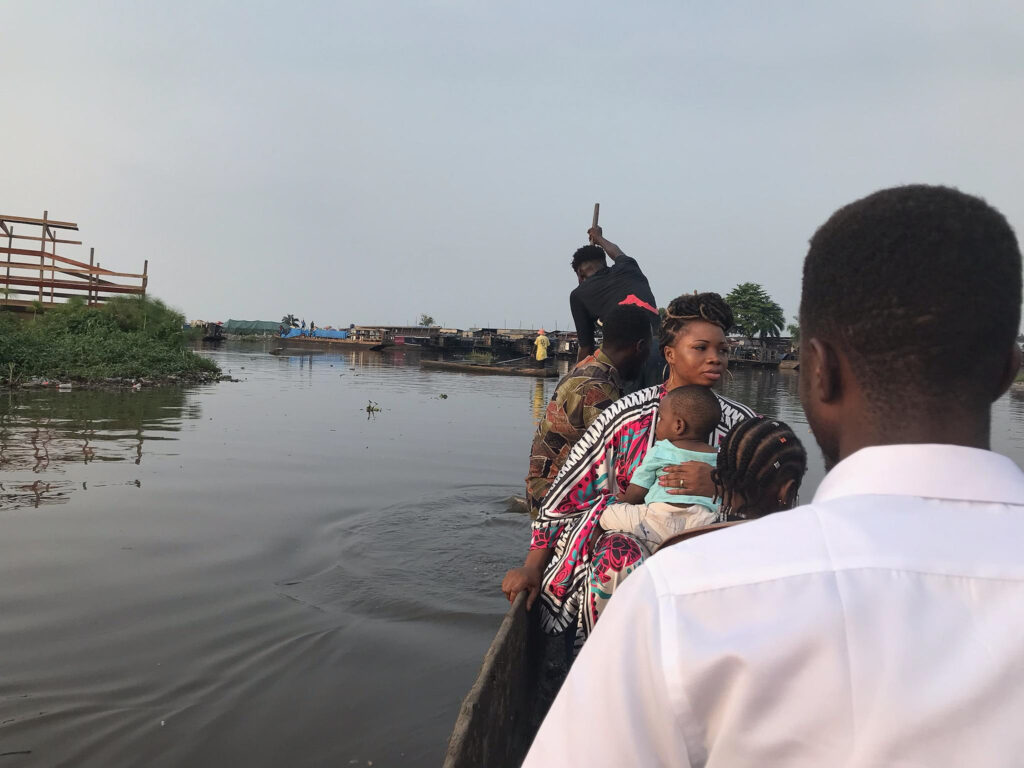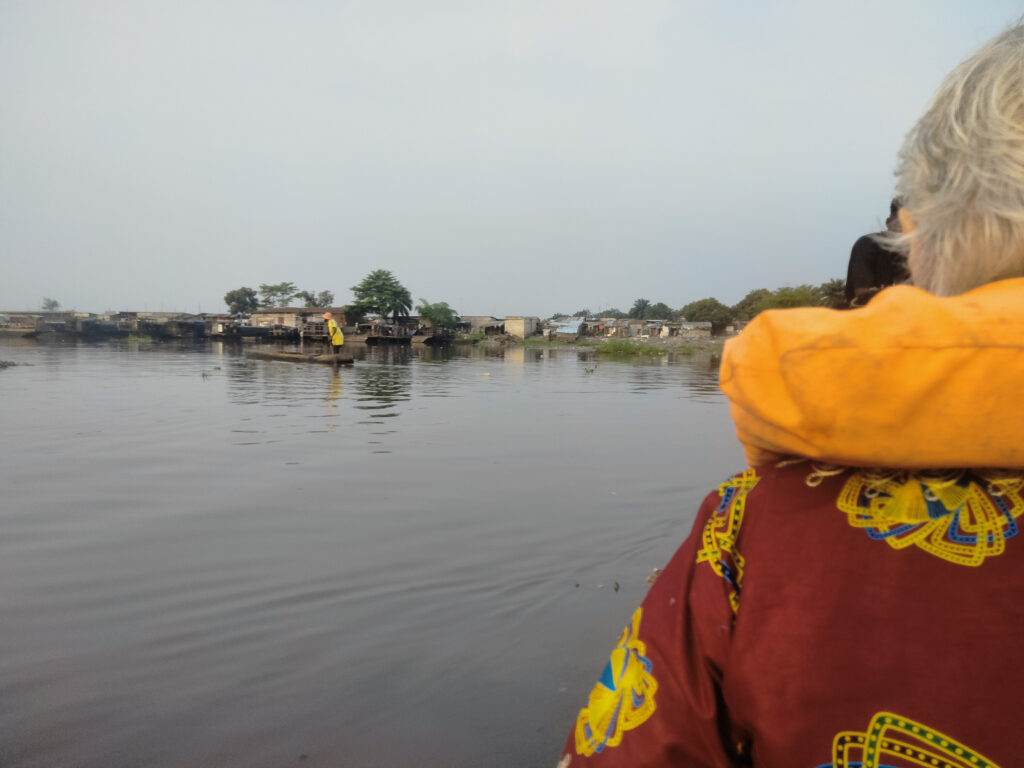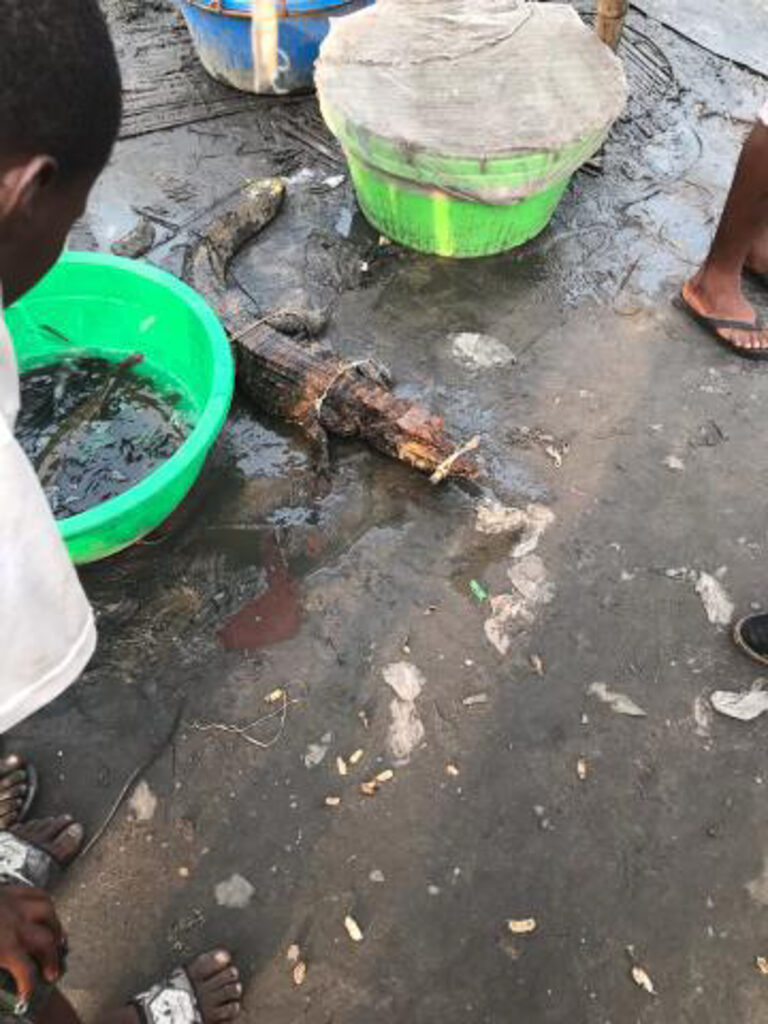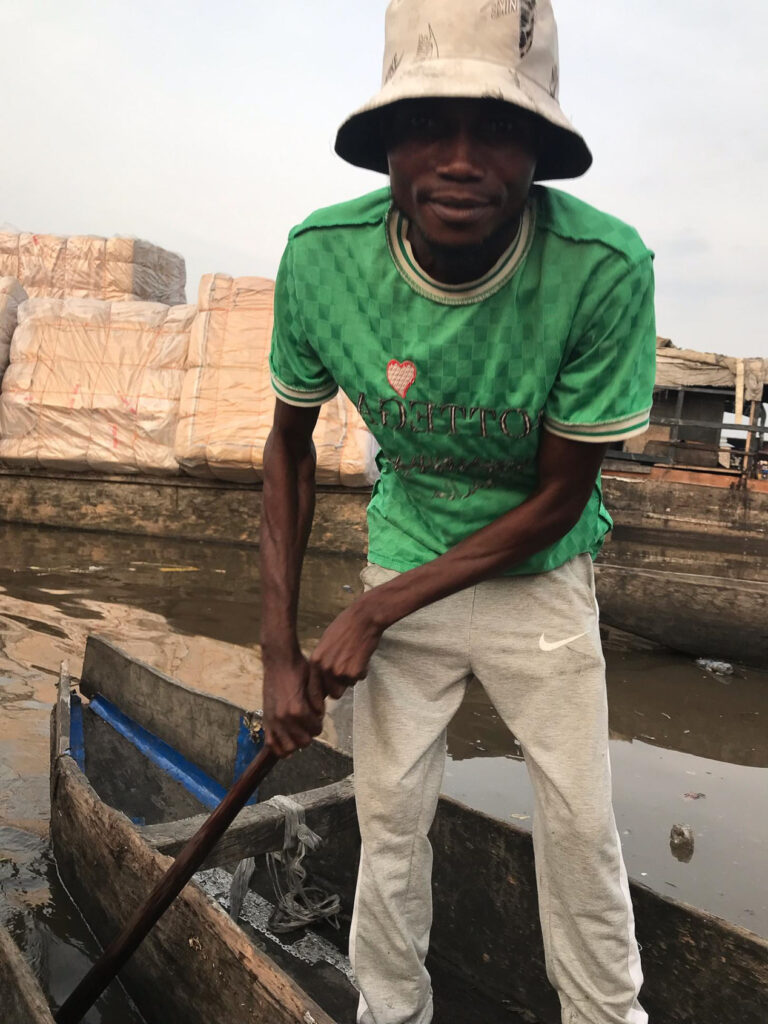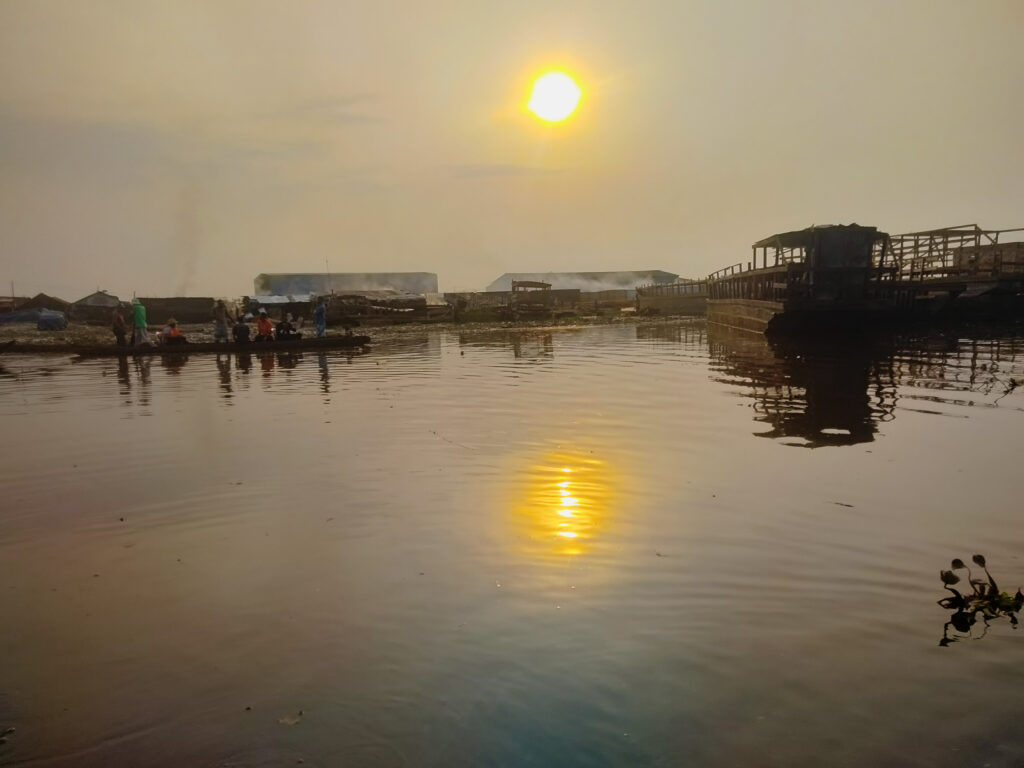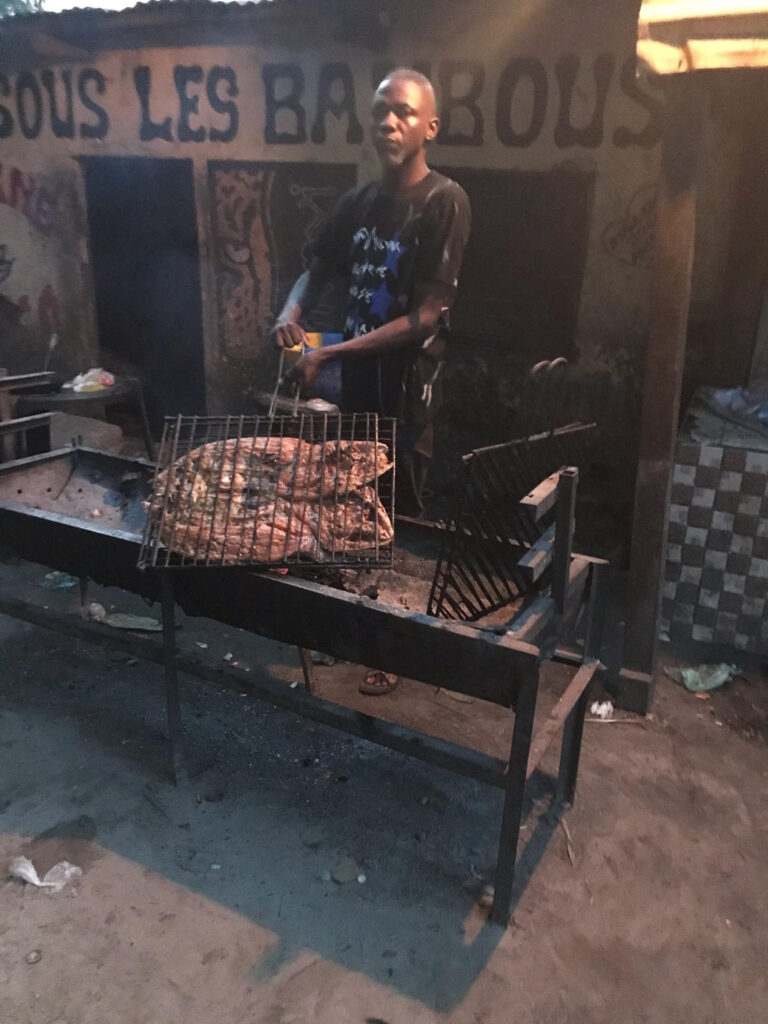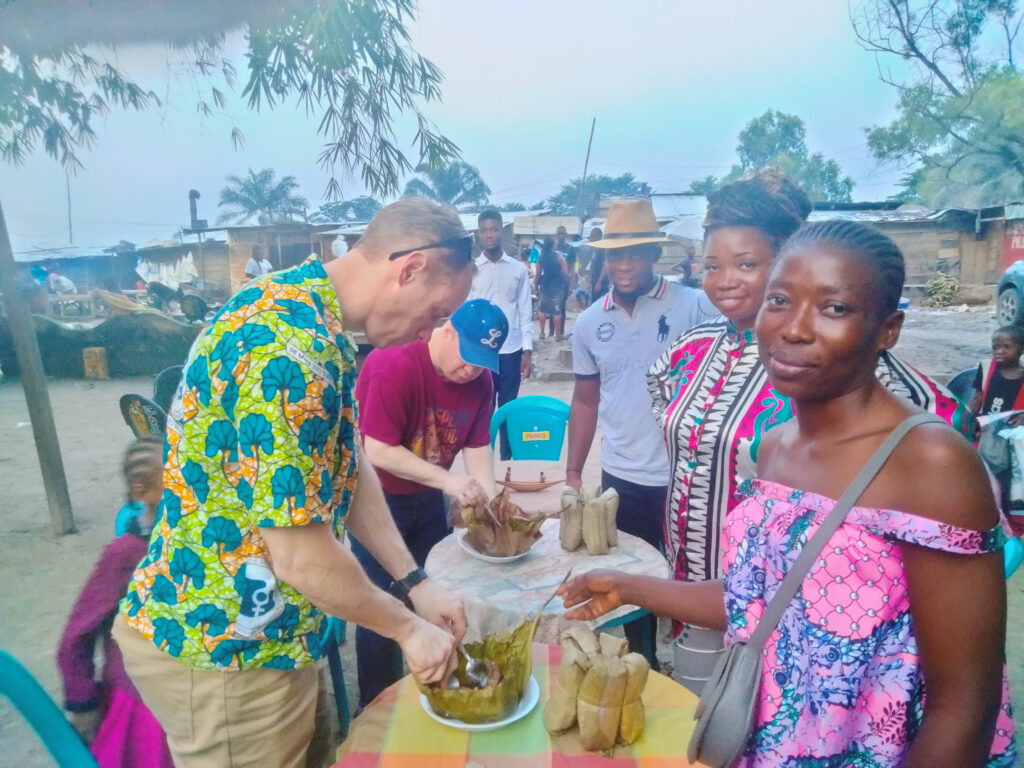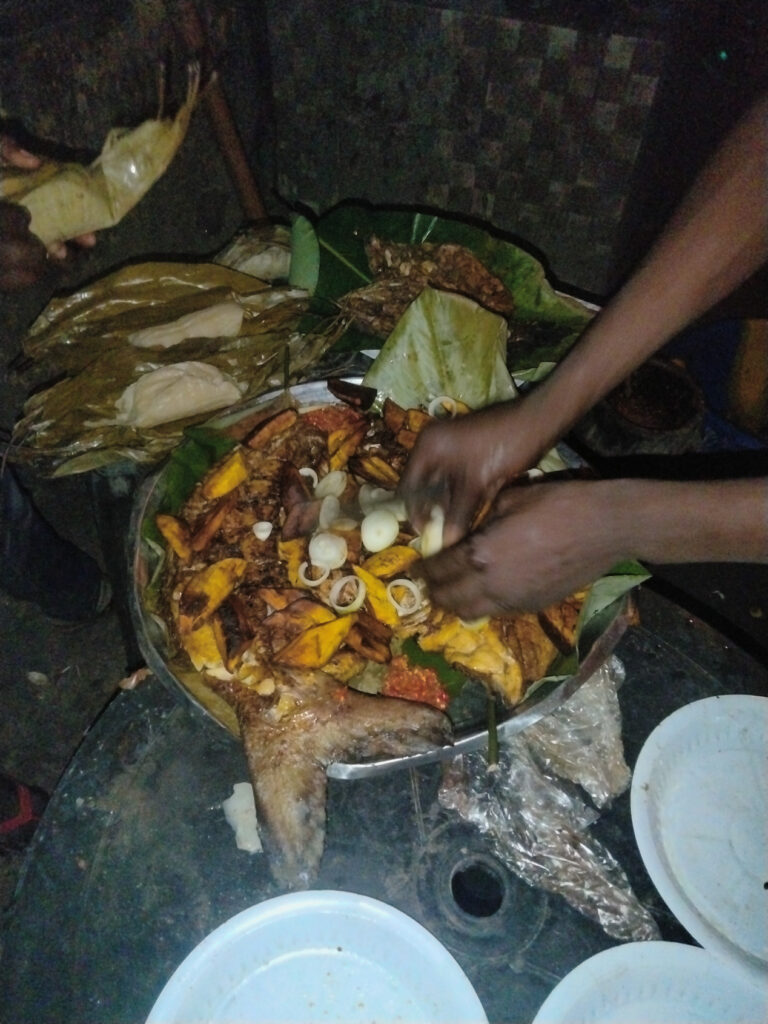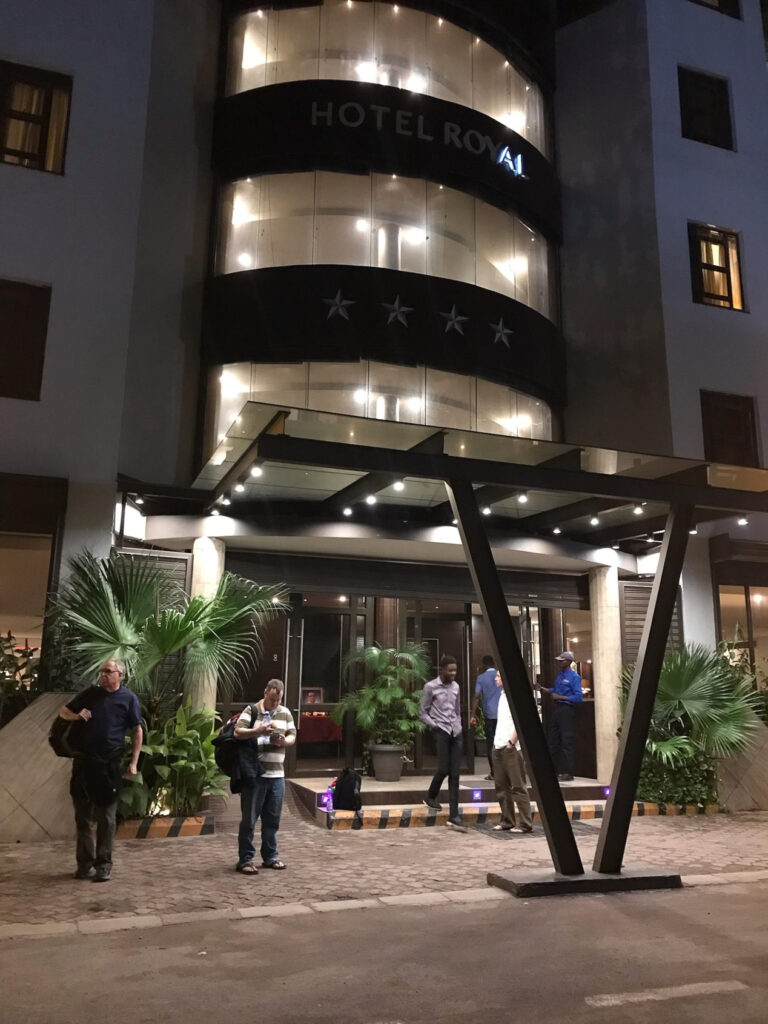We flew from Cleveland to Boston on American Airlines on February 22, 2023. We were scheduled to fly from Boston to Kinshasa via Istanbul on Turkish Airlines, and we arrived on time to catch our flight. But when we checked in at the Turkish Airlines ticket counter, we encountered a hostile ticket clerk who, for reasons still unknown, seemed determined to hinder our departure in any way possible. She found a pretext in Jay’s COVID card, which recorded his latest booster shot but not his original vaccination, and refused to let him board. After a bit of heated wrangling, we signed an agreement with the airline which involved a promise to get Jay vaccinated at Istanbul airport in return for being allowed to board.
Thinking our troubles were over, we arrived at Istanbul on time. Then the task was to find the COVID testing office. We had 3 hours. Plenty of time, right? We asked for directions beaucoup times, and often the directions conflicted. In any case, it was outside the security perimeter, which meant going through immigration and customs. We finally found Passport Control, bought our Turkish visas, went through customs, and reached the COVID testing site. They promptly informed us that the test took 1-1/2 hours. Well, you guessed it. We were at the complete opposite end of the airport from the departure gate, outside Passport Control, outside security, and had little time to make the flight. Daryl had joined us at IST, and he tried to convince the agent to hold the flight for a few minutes longer. They told him to get on the plane and closed the gate.
We went back outside Passport Control to Ticket Services and received our next shock: $480 apiece to rebook the three of us. Add the COVID test in ($500), and we had now incurred almost $1900 in needless charges.
By the time we finished rebooking our flights, it was late and we were frustrated and tired. We could either wait at the airport until the following evening or find a hotel. Near the airport exit were a series of rooms all in a line under a sign reading, “Hotels”. They were populated by men who smiled at us and gestured for us to come over. That should have been warning enough, but we were tired, right? So we went over to one of them and told them we needed a hotel. They nodded enthusiastically and suggested that we combine it with a tour the next day. There would be a shuttle cost, but that would be absorbed into the tour cost. Since Istanbul is over a half hour away from IST, we agreed.
The hotel was on a quaint, narrow street in the city. The building was pretty small, and the rooms were smaller. Two single beds. Oh yes, Jay got his own room at no additional charge (they had probably padded the charges enough to make that possible). We didn’t care, getting horizontal was the priority. Next morning there was a complimentary breakfast, which was quite good. The van picked us up, and off we went on our “tour”.
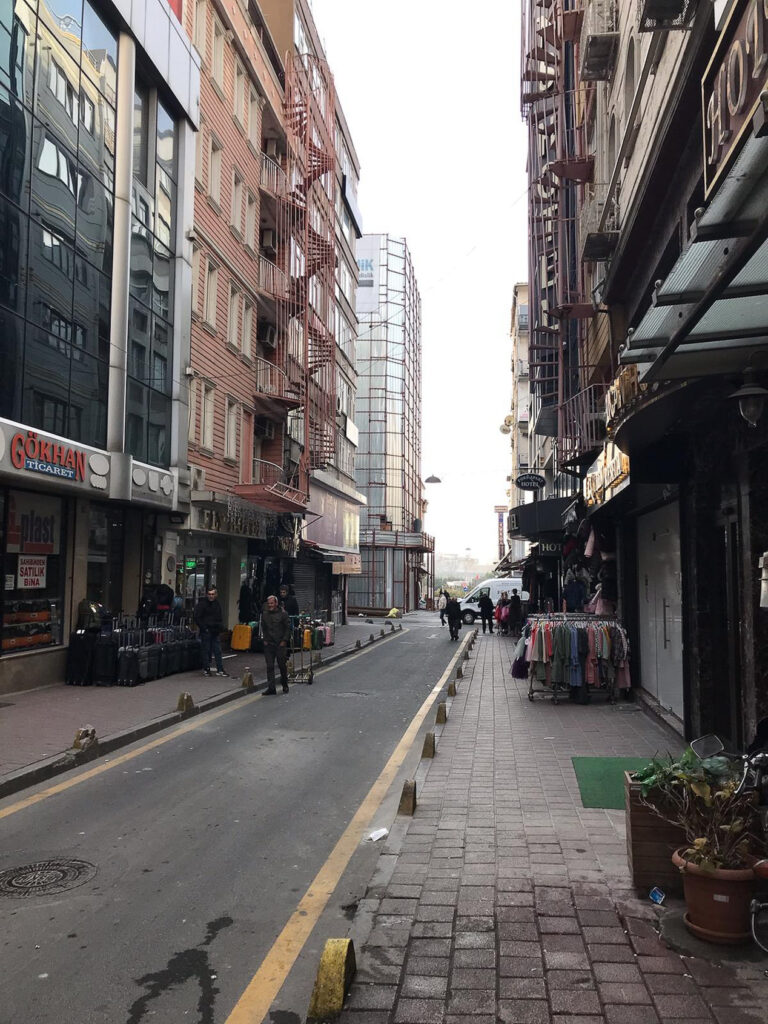
Istanbul is one of the most storied cities in the world, with a history stretching back to the 7th century BCE. First known as Byzantium, it was renamed Constantinople in 325 CE, when Emperor Constantine the Great made it the new capital of the Roman Empire. After the fall of the Western Roman Empire to Germanic invaders in the fifth century, Constantinople remained the capital of the Eastern Roman, or Byzantine, Empire until 1453, when it was conquered by the Ottoman Turks. After the collapse of the Ottoman Empire in 1922, the capital of the new Turkish Republic was established in Ankara, but Istanbul, as the city was renamed in 1930, remains the economic and cultural hub of Turkey; with over 15 million residents, it is home to 19% of the country’s population.
Of all the countless marvels of Istanbul, the one above all not to be missed is the basilica of Hagia Sophia, or Aya Sophia as it is known in Turkish. Hagia Sophia was built in the reign of the Eastern Roman Emperor Justinian I and completed in 537 CE. At the time it was the world’s largest church and remained so until the completion of the Roman Catholic cathedral in Seville, Spain, in 1520.
The name Hagia Sophia does not refer to any particular saint but rather means “Holy Wisdom,” alluding to Jesus Christ.
Over the centuries Hagia Sophia has undergone many changes, as a result of both natural disasters and human events. The first and greatest disaster was collapse of the dome in 558. The dome had to be completely rebuilt, but the result has survived, with some reinforcement and repair, down to the present day.
In 1204, as a result of various machinations by the Venetians, who by then had become serious trade rivals to the Byzantines, an army of Western Europeans embarked on the Fourth Crusade but ended up besieging Constantinople instead of Jerusalem, and under the leadership of the Venetian doge Enrico Dandolo, they sacked Constantinople and plundered many of its treasures, not excepting Hagia Sophia. Nevertheless, the basilica survived, as it did the conquest of Constantinople by the Ottoman Turks in 1453. Sultan Mehmet II the Conqueror turned Hagia Sophia into a mosque, which was how it came to be surrounded by four minarets. The Ottoman regime made various changes to the interior, such as plastering over the Christian-themed mosaics depicting Jesus, Mary and the saints in accordance with the Islamic prohibition on representations of humans and animals. After 1935, when Mustafa Kemal Ataturk, founder of the Turkish Republic which replaced the Ottoman sultanate, declared Hagia Sophia a museum, the mosaics were restored to public view. (Since the government of Recep Tayyip Erdoğan reconverted Hagia Sophia into a mosque in 2020, the mosaics and other Christian images have to be covered with curtains during services.)
The picture of Hagia Sophia included here is a stock photo because the one I took didn’t turn out very well.
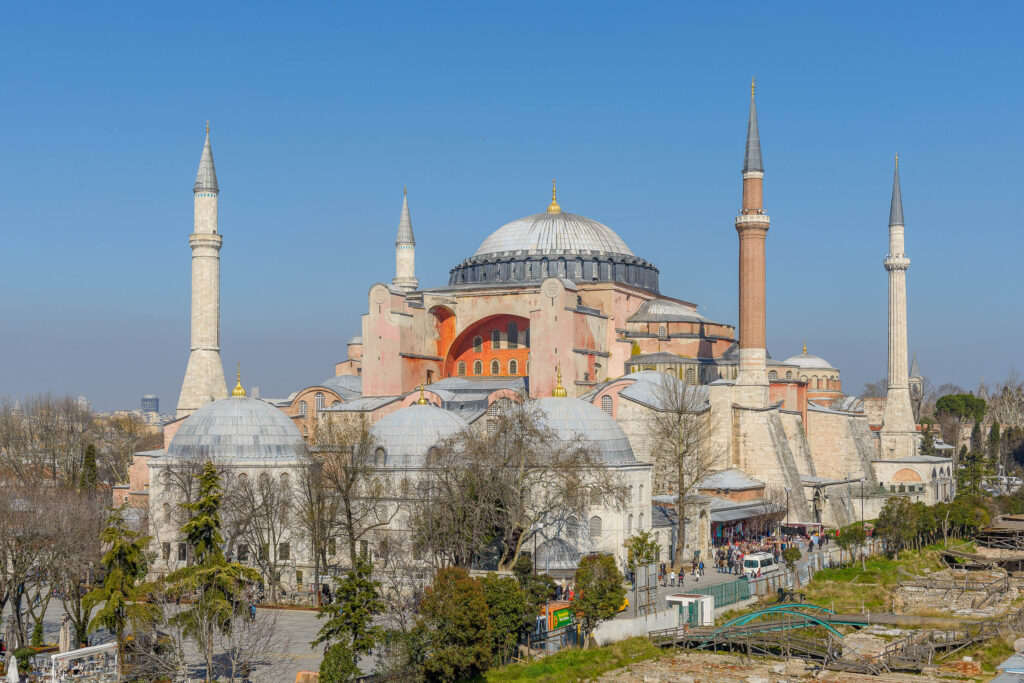
At the other end of Sultanahmet Park from Hagia Sophia, where the Grand Palace of the Byzantine emperors once stood, is another majestic structure, the Blue Mosque, officially known as the Sultan Ahmed Mosque. When in the early 17th century the Ottoman Empire suffered a series of military reverses at the hands of the Habsburg Holy Roman Empire and the Safavid Persian Empire, Sultan Ahmed I, the namesake of Sultanahmet Square, saw these setbacks as an omen that he was losing the favor of Allah. In order to win it back, and to reassert the glory and majesty of the Ottoman empire, he decided to build a new mosque that would rival Hagia Sophia as a work of art and engineering. The Blue Mosque, begun in 1609 and completed in 1617, was the result.
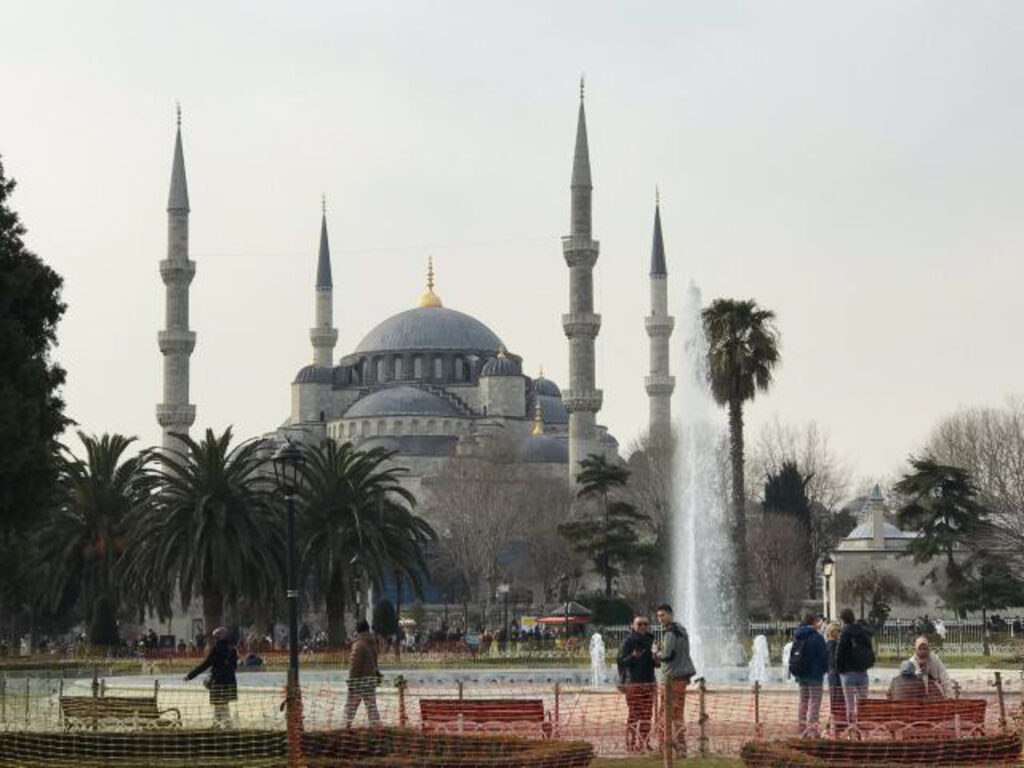
Next stop was the Topkapı Palace, home of the various Sultans of the Ottoman Empire until the mid-nineteenth century, when a new and more modern palace, the Dolmabahçe, was built on the Bosphorus. We also visited the mausoleum of the sultans and their sons. It is considered a holy place, so shoes must be removed inside. I was in the midst of removing my shoes and didn’t realize that I had placed my shod foot on the upper step. Immediately someone said “No shoes inside!” and a woman swatted me on the side. Oops!
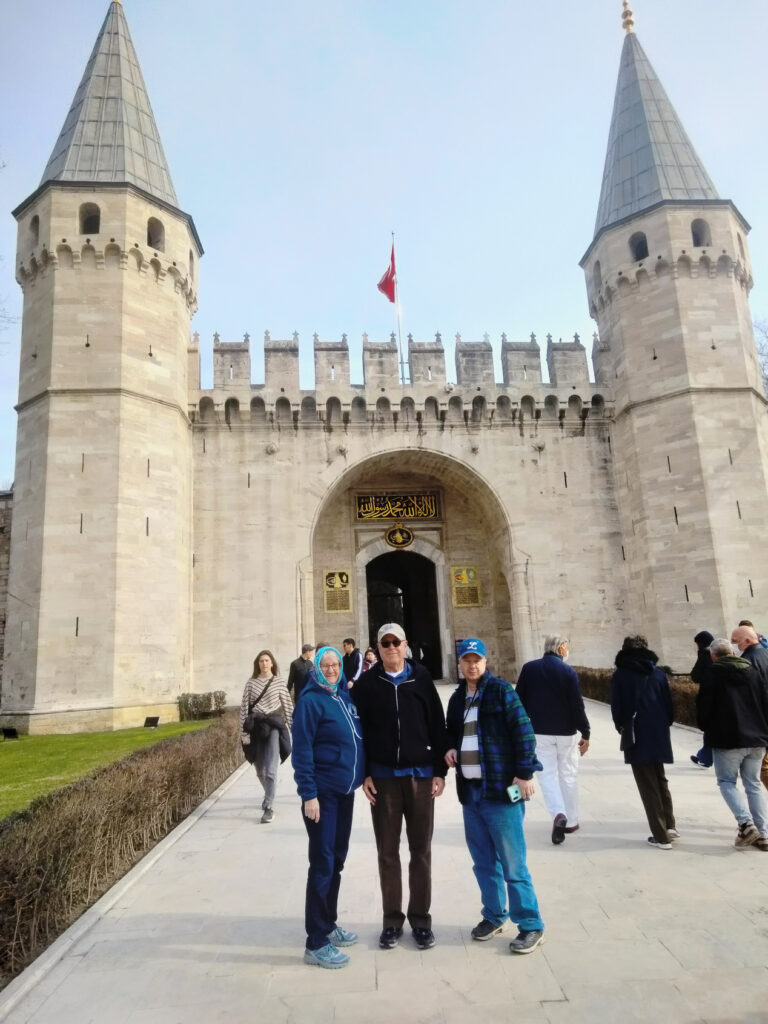
Next we went to a candy shop. This was when my realization of what we had gotten into became clearer. Very friendly people, and they all knew each other. We were given several samples of Turkish Delight and various teas, and then the sales pitch began — very persuasive, aggressive, and assuming we wanted everything. We had a pretty good bag load of stuff at the end of that experience. Good quality stuff, but quite a bit more than I figured on buying.
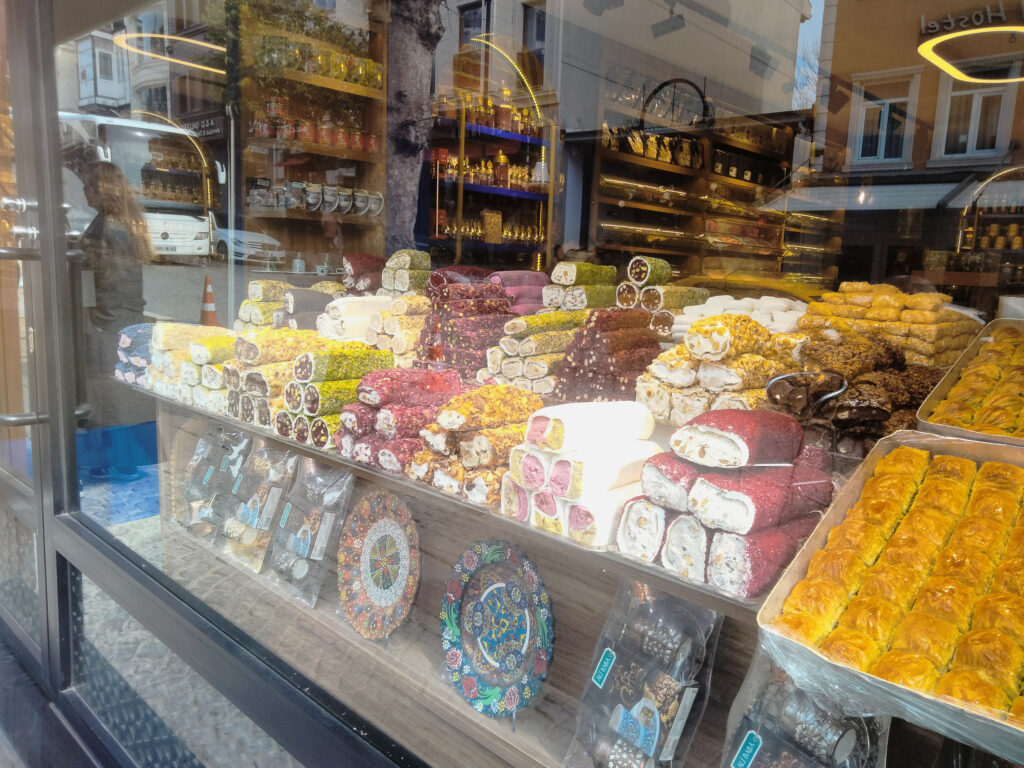
The final stop was the Bosphorus. The picture I am including is a stock photo because the location the guide took us to for pictures was uninspiring. The guide probably chose it because there was a bazaar nearby, to which he gestured with a smile. We walked through the bazaar quickly, looking neither to the right nor the left (except I did keep my eyes on the driver). I leaned over to him and told him we were ready to return to the airport. He looked a bit surprised but did not attempt to persuade us otherwise. Into the van, and a half hour later we were let off at the airport. I cannot tell you how relieved I was!
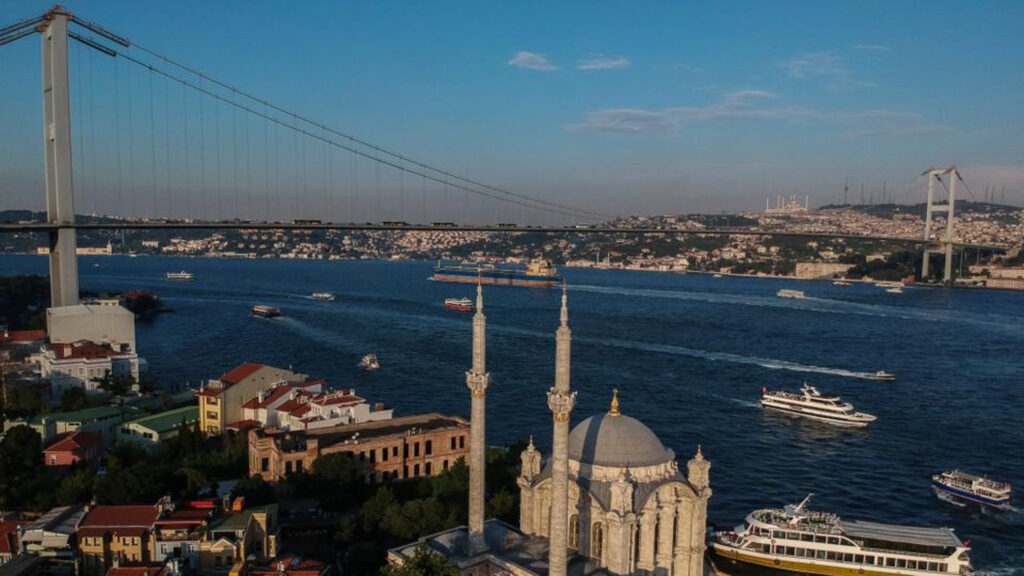
Built in 1970-73, this is one of several great bridges over the Bosphorus in the Istanbul area. The mosque is a Baroque Revival piece commissioned by Sultan Abdülmecid I and built in 1854-56. It is noted noted for its high bay windows, which are cunningly contrived to stage a “light show” using both sunlight and reflected light from the water.
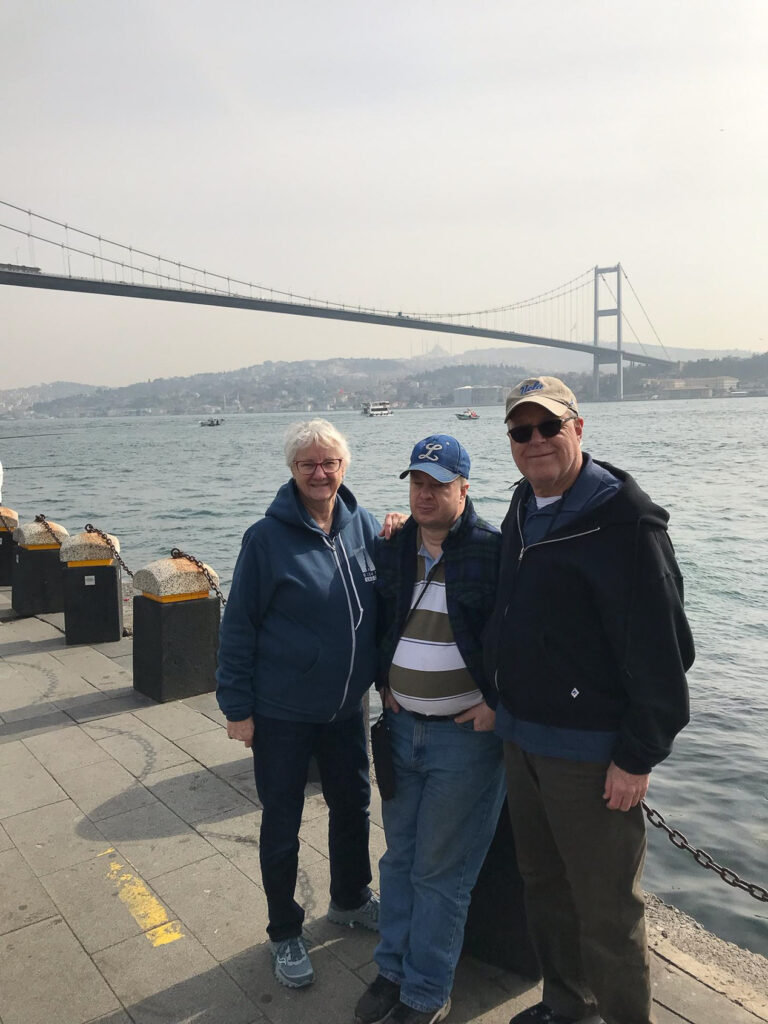
Back at the airport, our flight to Kinshasa was listed on the departure schedule along with a bevy of others, many of them to exotic destinations which we have never heard of (and neither have most other people). Where in the world, for example, are Astana, Ercan and Minvodi?
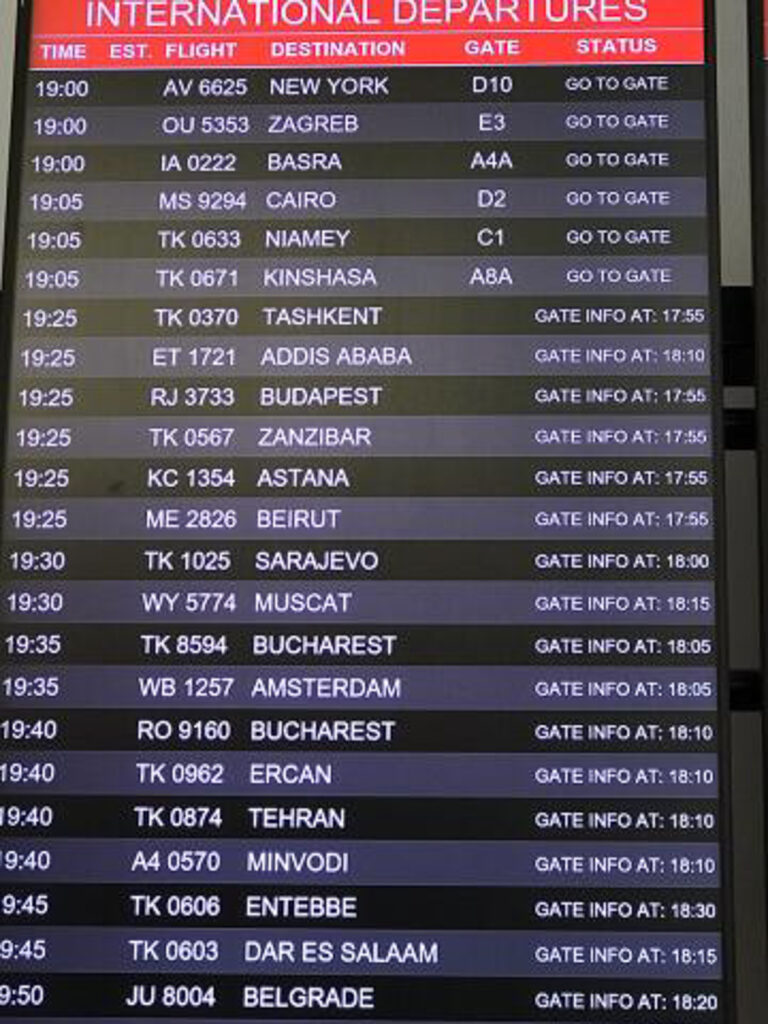
Finally, a few hours later, we were on our way at last to Kinshasa.
